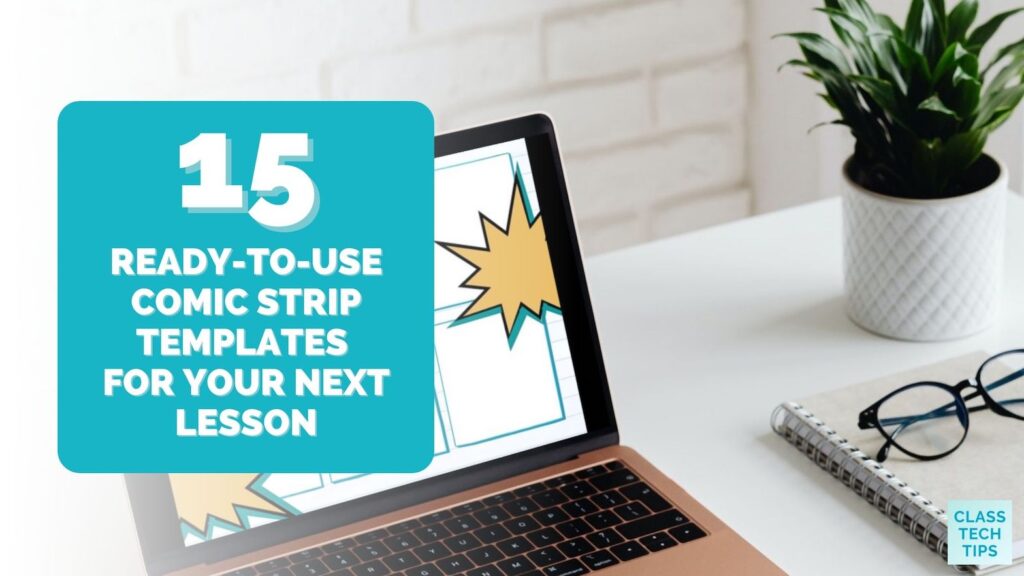

Share this post
15 ready-to-use comic strip templates for your next lesson.
- June 1, 2022
If you’ve stopped by the blog before, you know that I love sharing ideas that promote creativity in the classroom. Whether I’m working with students in a classroom setting , or leading a webinar for teachers , creative products are in full swing. In hopes of helping “make EdTech easier,” I created comic strip templates for you.
Today, I have 15 ready-to-use comic strip templates for your next lesson. These are super simple and ready for you to use “as is” or customize for your students. I’ve also included tips for creating your own comic strips using templates you can find in three popular tools. And if you’re new to using comics and not sure if it’s for you, check out my blog post, “ 5 Reasons to Try a Comic Strips Activity .”
Click to download — 15 ready-to-use comic strips templates for your next lesson.
How to use these comic strip templates
After you download the comic strip templates, you have a few options for how to use them with your students. Of course, you’ll want to have a vision for the activity that meets the needs of your students; this could include asking students to:
- Create an alternate ending for a book
- Share an important moment from their life
- Spotlight a moment in history
Then, you’ll decide if this is an online or offline project or if you’ll provide options for students to choose from. For an offline project, you’ll download the comic strips then print them out. Your students could also combine this with a tool like Seesaw by snapping a picture of their comic strip illustration and recording their voice as they talk about what they made.

For an online project, you’ll download the comic strip templates and share the PDF pages you want students to use as a file. You might share this in Google Classroom and let students use a PDF annotation tool to draw or add text. Alternatively, you might export the pages you want to use as a JPG and have students add the image to another favorite tool that lets them draw or add pictures to their page. It’s totally up to you.
3 Tools for Making Comics
You can click here to download the 15 ready-to-use comic strip templates I made for you or try a tool from the list below.
Making Comics in Book Creator
Book Creator has a comic option that will pop up when you go to create a new book. You’ll find this option as the first step to follow after clicking the “new book” button. If your students choose this option in Book Creator, they’ll be able to add cells to the background of their page and add talk bubbles, too. Learn more about comics in Book Creator on this page .

Finding Comic Strip Templates in Canva
Canva for Education is free for K-12 students and teachers. If you want to find comic strip templates, sign in to Canva and go straight to the search bar. Then type in “comics,” and you’ll see a bunch of templates you can use right away. You can create comic templates to print out and share with students. Or your students can log in and search through these templates, too.
Comic Templates in Adobe Creative Cloud Express
Adobe Spark is now Adobe Creative Cloud Express for Education . It’s completely free for K-12 schools and districts, too. Not only does Creative Cloud Express have all of the great things you might remember from Spark, but it also has lots of extras . For example, you and your students can search for templates at the top of the screen. You’ll find plenty of inspiration from the templates in Creative Cloud Express.
Ready to get started? Check out these 15 free comic strips templates I’ve created for you. Or explore one of the three tools I mentioned above to set up students for success with their next comic strip project.
Stay up-to-date on all things EdTech.
EdTech tips and resources for educators, straight from Monica’s desk every Monday. Don’t miss a thing.
Share this post:

Monica Burns
Dr. Monica Burns is a former classroom teacher, Author, Speaker, and Curriculum & EdTech Consultant. Visit her site ClassTechTips.com for more ideas on how to become a tech-savvy teacher.

9 Back-to-School Essentials
Get ready for a smooth school year! Discover more than 9 back to school essentials for teachers, from planners to healthy snacks and more.
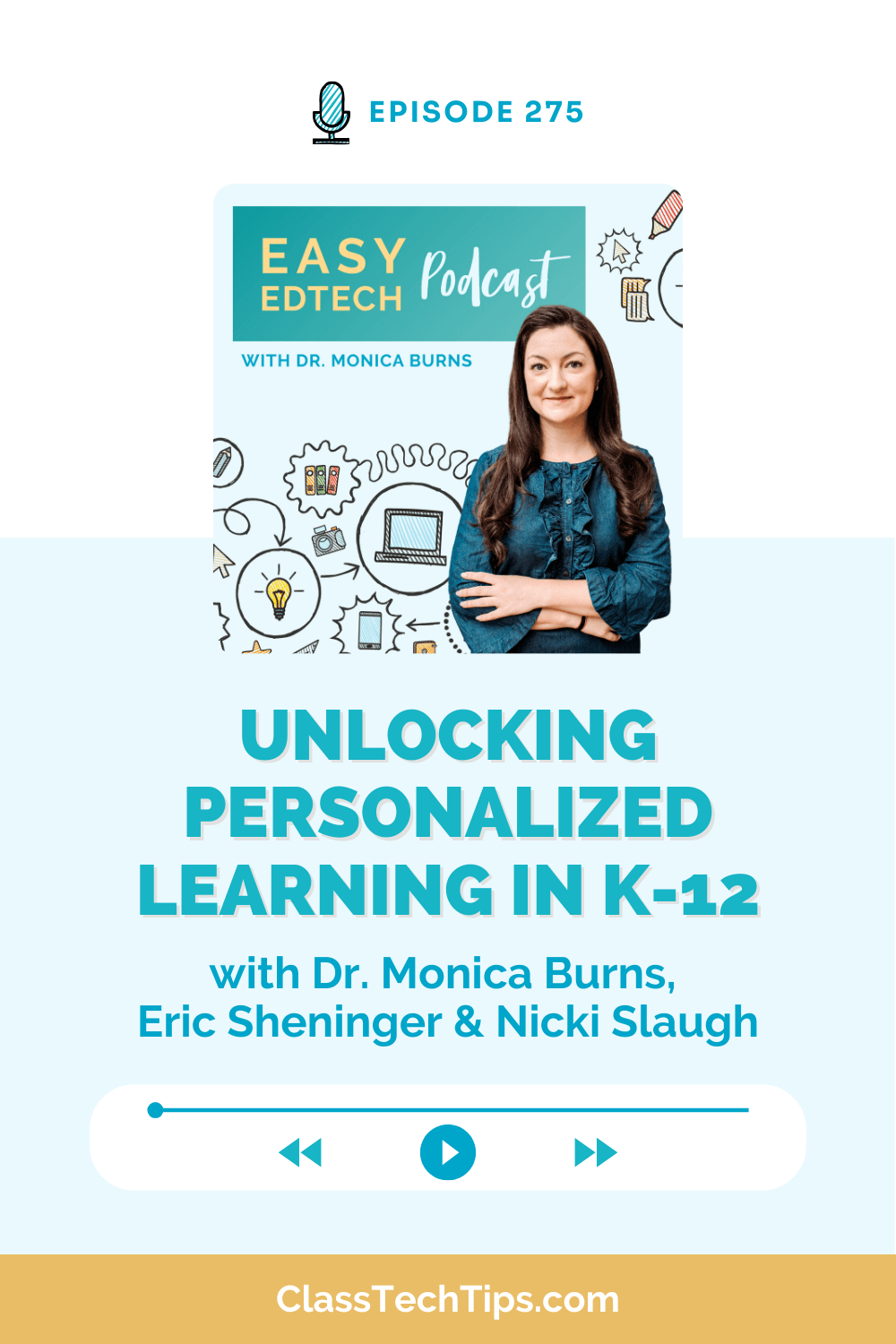
Unlocking Personalized Learning in K-12 with Eric Sheninger and Nicki Slaugh – Easy EdTech Podcast 275
Join authors Eric Sheninger and Nicki Slaugh as they share expert tips on personalized learning, differentiation, and boosting engagement.

10 Tools for Creating Quizzes
Discover 10 innovative tools for creating quizzes, from AI-powered generators to gamified platforms, perfect for classroom assessments!

Start every week with a plan and stay organized this school year!
- You'll get a standard daily planner template, weekday, and weekend templates
- A monthly at-a-glance calendar and a monthly goal setting sheet
- A few extra pages for notes, contacts and passwords
Free summer Checklist

5 Things to Do Now to Make Tech Easier in the New School Year
- Try these five tips now and save time when you head back to school this fall.
- This quick list gives you FIVE action items to make your technology integration easier this school year.
- Save time this school year with a special EdTech checklist

Spring Cleaning with an EdTech twist!
- Special eBook with 10 Quick Tips to Organize Your Google Drive
- If you're not using Google Drive, these strategies are customizable for Dropbox, Office365 and more!
- Get a fresh start this spring with these actionable tips for cleaning up your online organizational systems
Are you an EdTech company interested in getting featured on Class Tech Tips? Email [email protected]
Free planning pages, free summer checklist, spring cleaning guide, free - 10 quick tips to organize your google drive.
Comic Strips Templates
- May 4, 2023
- Comic , Free Templates , Printable
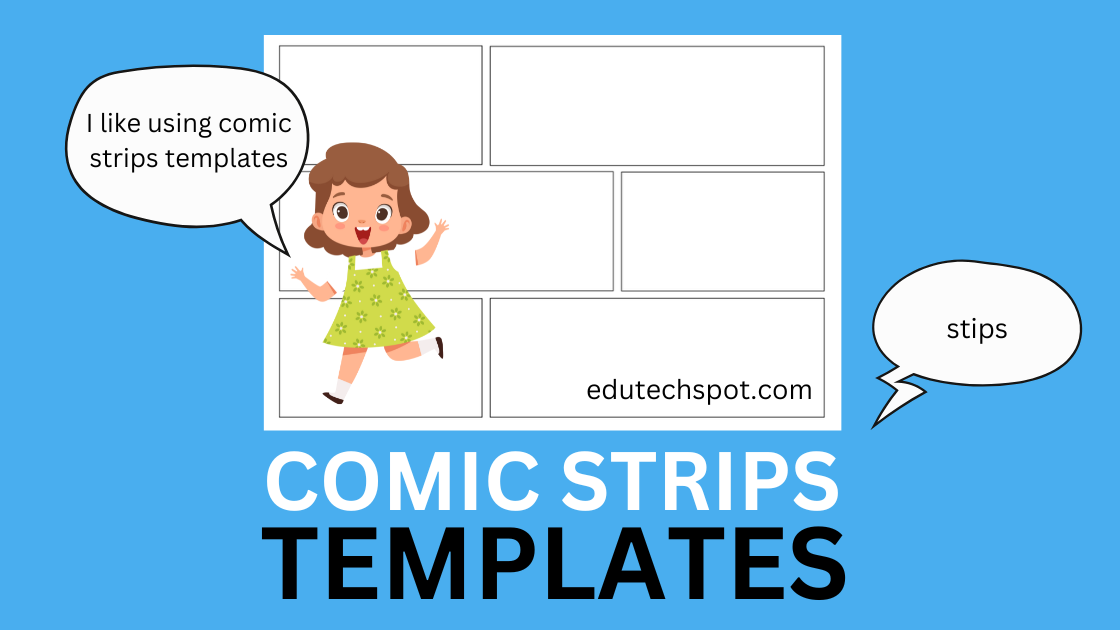
Comic strips templates. Welcome to the world of comic strip creation! Whether you’re an experienced artist or a beginner, the possibilities are endless when it comes to creating your own comics. A good comic strip requires a combination of creativity, storytelling, and attention to detail. But don’t worry, with the right tools and resources, anyone can create a compelling and engaging comic. That’s why I’m here to provide you with some comic strip templates in PDF format that are ready to print and use for educational purposes. These templates will help you get started on your comic-making journey and give you a foundation to build upon. So, let’s get started!
I recommend reading: 21 Free Online Comic Strip Makers | Comic Panels | How to Make a Comic Book on the Computer | Create Digital Art | Free Flash Card Template for Word
Templates for Comic Strips
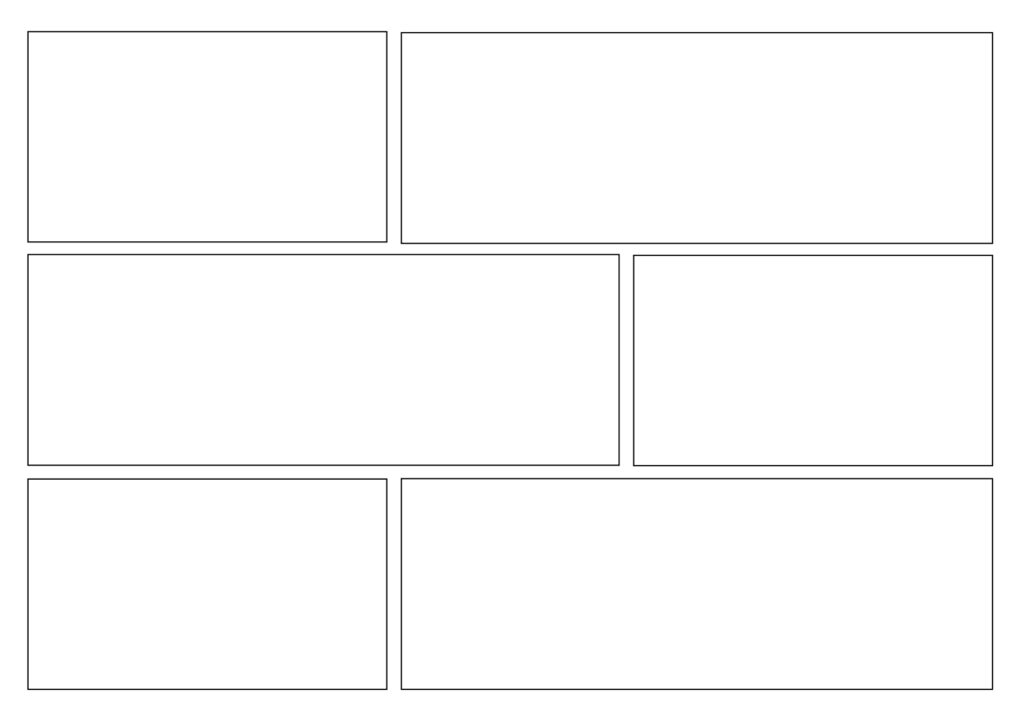
Templates for Comic Strips 1
This panel template contains 6 boxes with alternating size in each row. In general, the layout goes in two columns and three rows. The column width in each row is at alternating size. For example, in the first row, it begins with a column of about 40% width, and the right column that is the second column is at about 60% width. This width composition is then alternated in the following row, that is the second row. The last row goes back to the first composition. This allows students to figure out what kind of event they should input to each column with different width. Sometimes the smaller one can be the focus, and the wider one can be for long view.
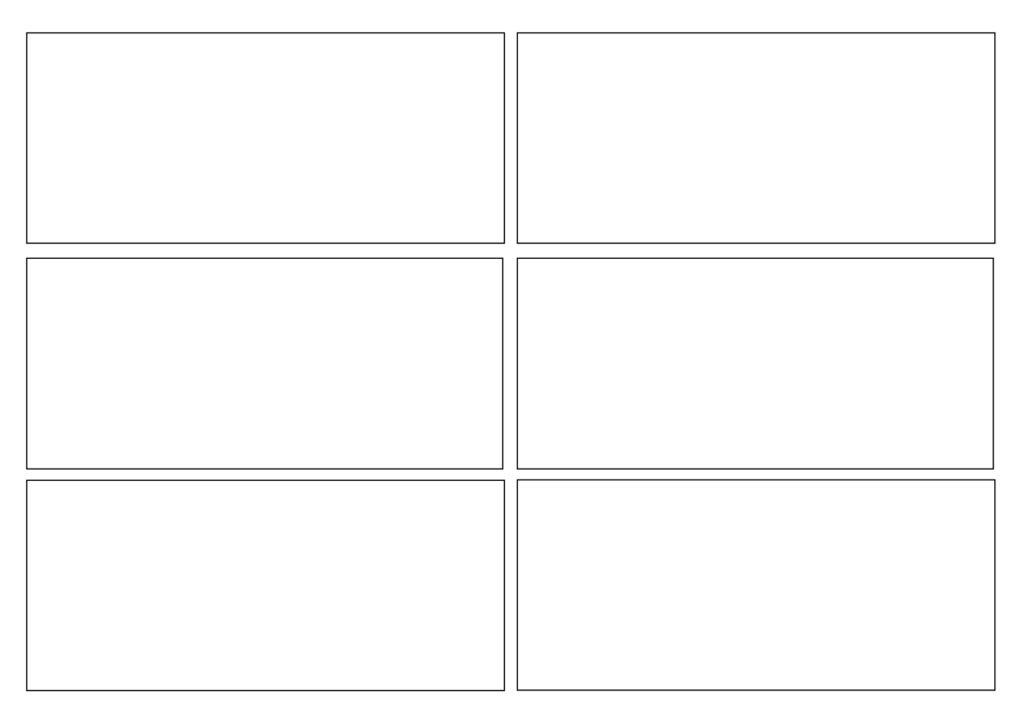
Templates for Comic Strips 2
This second comic strip template panel is arranged in the same width. meanwhile, the composition between the row and column remains the same as the previous one, that is two columns and three rows. The width of each column is the same between the left and the right, that is 50%. I think, this type of comic strip panel is suitable for beginner whose focus is on filling the panel with images and conversation or dialog bulb. The goal is just that the students feel comfortable in participating in the comic making project. As long as the students can put their ideas into the panel, it is considered achieved. Students who are beginner at this process will feel that this task is easy and thus hopefully can motivate them to do the complex ones. Using this similar size panel, they will not find it hard to think about what focus or what specific event should be put in the smaller panel or the bigger panel.
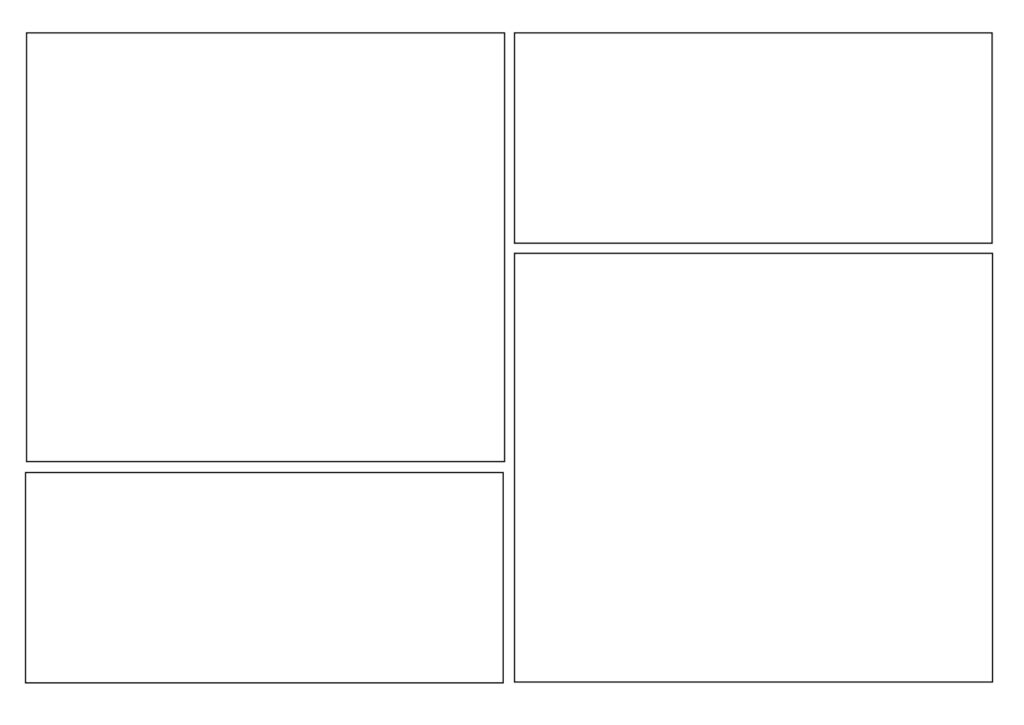
Templates for Comic Strips 3
This comic strip template layout is completely different from the previous ones. This one starts with a bigger size and is in the intersection of the two panels in the right. It feels like a photo collage and is in the masonry style.
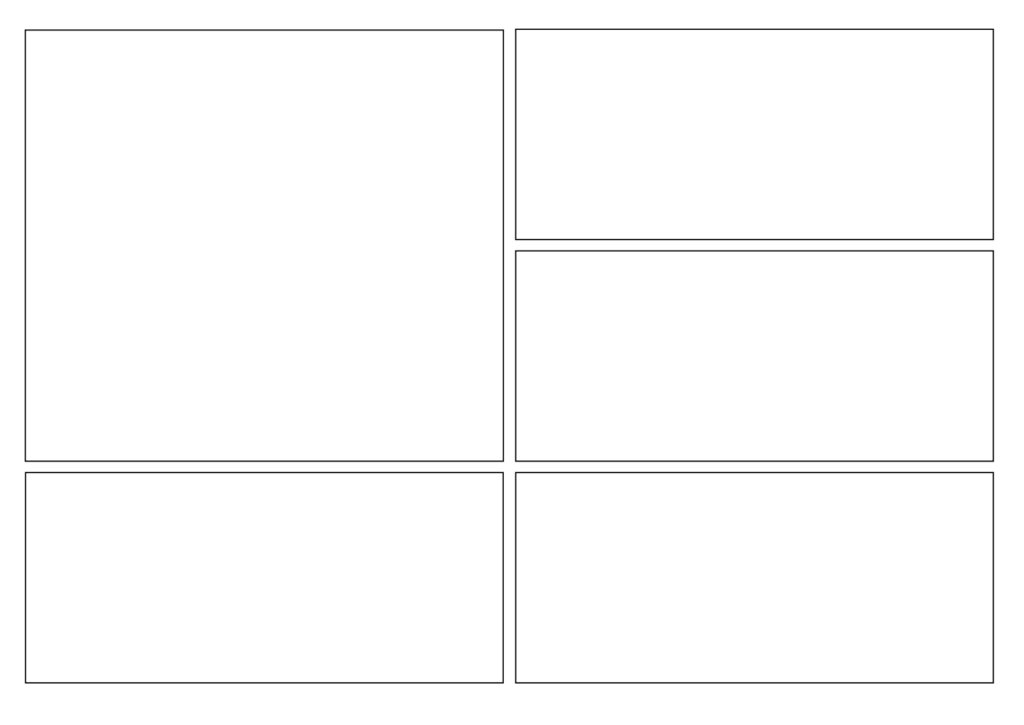
Templates for Comic Strips 4
This layout is also of unique composition. It begins with big square that is inline with two smaller grids at the same size but a half of the bigger one. The bottom part is at the same column with but with smaller height. The opening big square can be used to inform a hook, or an event that is shocking.
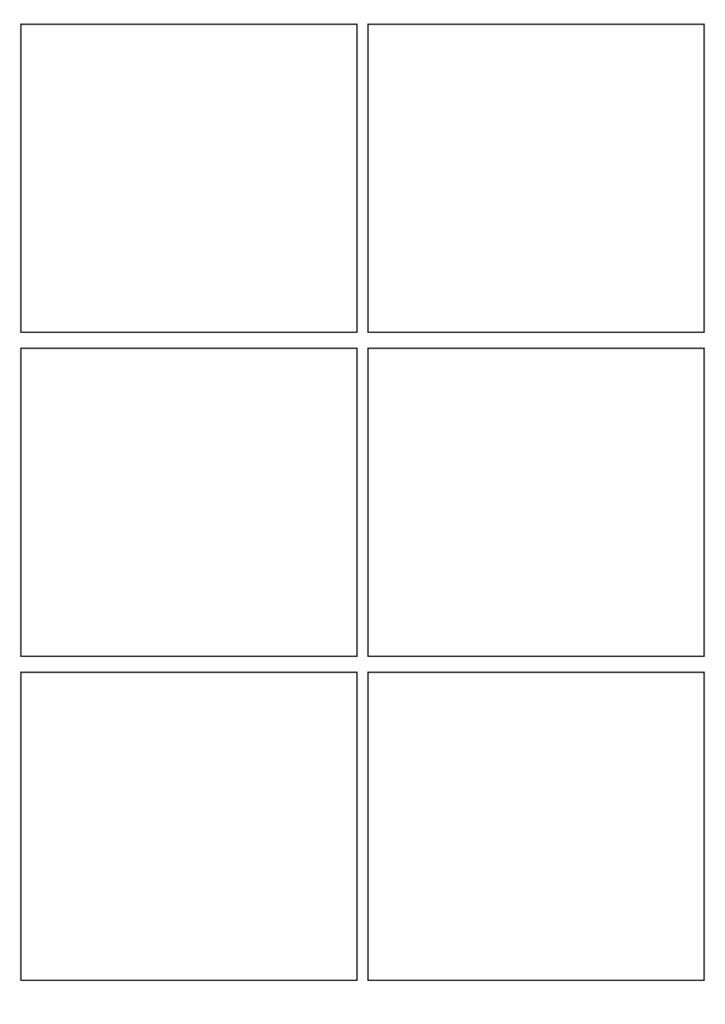
Templates for Comic Strips 5
This layout is similar to item number 2. The boxes are at the same size. There are six boxes in two columns and three rows. They are all in square shapes with the same size. This type of comic strip template is also perfect for beginners who do not have to think about which panel size should be used for which event.
I remember when I was a kid, trying to create my own comic. Initially I was struggling to follow model comic from famous comic books. However, I found it so hard to follow. Some of the panel are overlapped, some others are in triangle, and other unusual forms. Then, I tried to create my own panel, and I came up with panels with the same size. At that time, it gave me ease in drawing as all I have to do is drawing within the panel. I did not need to think hard replicating the professional and advanced unusual shape of comic panel layout.
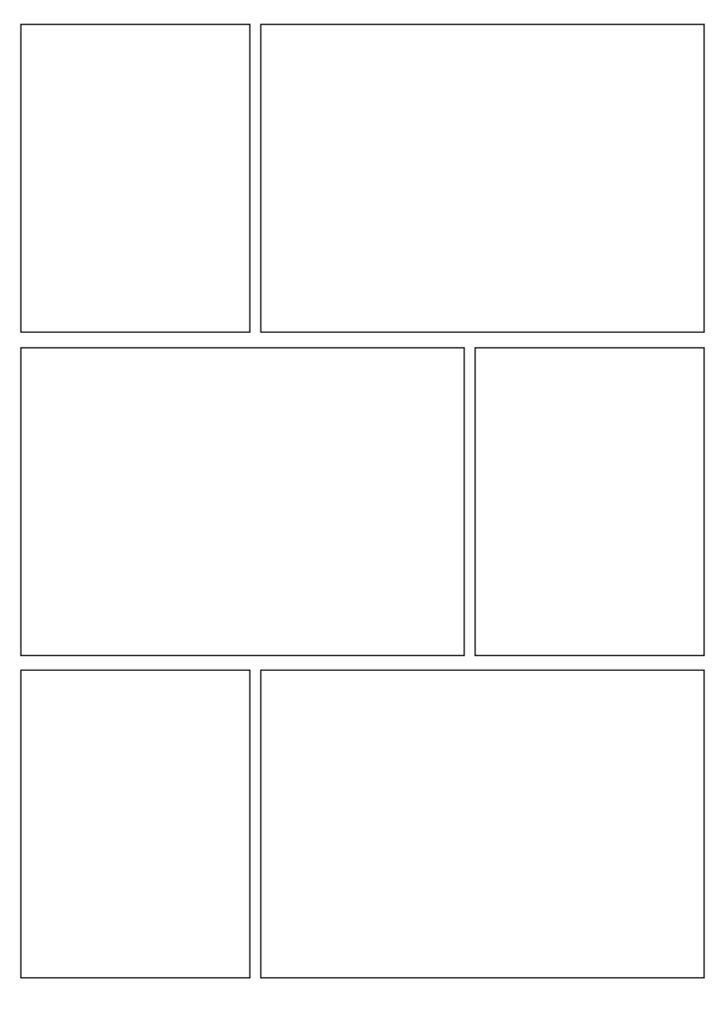
Templates for Comic Strips 6
This one is actually similar to comic strip template number 1, the first in this page. The difference is that it is in portrait while the earlier is in landscape. This is for those who have already practiced drawing comic characters into comic panels for a while. They have already had experience that is enough to go more advanced. This type of panel does require experience because the size of each box is different from one another. One is small and one other is bigger. The student, when using this template, has to adjust specific event that would match the size of the panel. For example, the smaller box can be used to position a man walking, while the right side that is bigger, is to portray when the man is walking, thus require the student to also draw the surrounding.
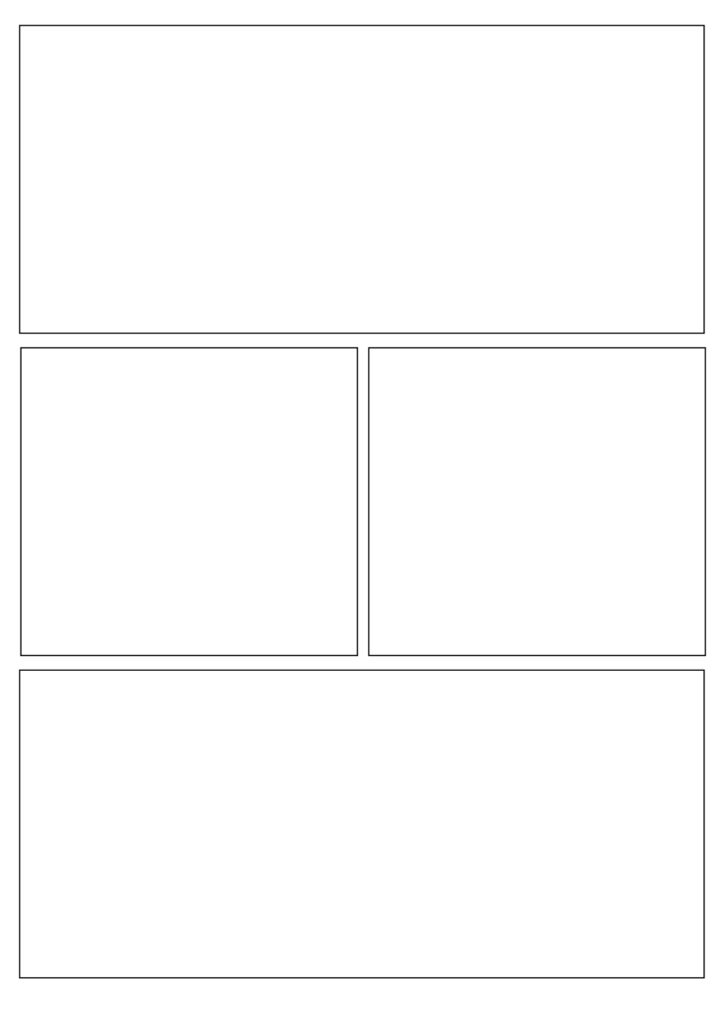
Templates for Comic Strips 7
The comic strip template that features one big panel in the first and third rows, and two equal-sized panels in the second row, is a classic layout that has been used in comics for decades. This type of panel layout is ideal for comics that require a mix of large, dramatic visuals and smaller, more focused scenes.
In the first row, the big panel can be used to showcase a wide-angle shot or a detailed close-up of the scene. This panel is perfect for introducing the setting, characters, or establishing the mood of the story. In the second row, the two equal-sized panels can be used to show two different perspectives of the same scene or to depict a sequence of actions. This layout is particularly effective for showing cause and effect, or for building tension and suspense. In the third row, the big panel can be used to create a sense of closure or to show the aftermath of the events that took place in the previous panels.
To ensure a clear reading order, it is suggested that the speech bubble or dialogue should be positioned close to the characters or objects they are referring to. In the first row, the speech bubble can be placed in the top or bottom corner of the panel, while in the second row, they can be positioned above or below each panel. In the third row, the speech bubble can be placed in the center of the panel or at the bottom, depending on the layout of the image.
This type of comic strip panel layout is suitable for a variety of events, including action scenes, suspenseful moments, and scenes that require a lot of detail. It is particularly effective for comics that want to establish a sense of place or create a cinematic feel. Overall, this classic layout is a great starting point for anyone who wants to create an engaging and visually appealing comic.
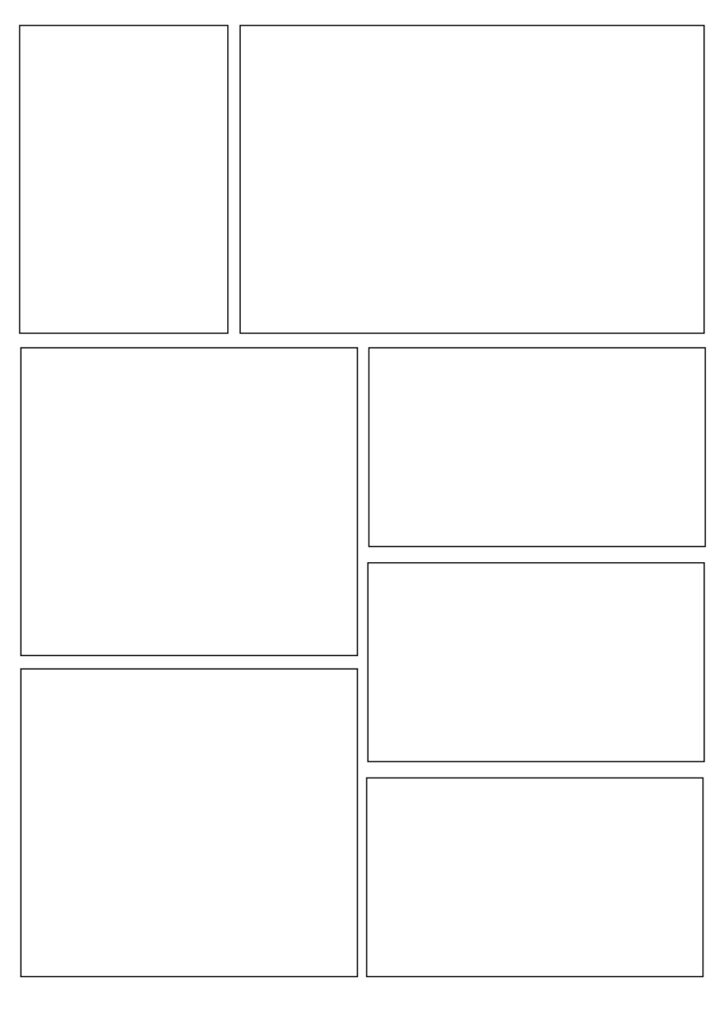
Templates for Comic Strips 8
The comic strip template with a layout featuring two boxes in the first row, a two-column layout in the second row, and a mix of squares and rectangles in each column, is a unique and versatile design that can accommodate a range of storytelling styles.
In the first row, the two boxes can be used to show different perspectives of the same scene or to juxtapose two separate events. The 30% box can be used to show a close-up detail or a smaller moment in the story, while the 70% box can be used to showcase a larger scene or a key event.
In the second row, the two columns provide ample space to create a sequence of actions or to depict multiple characters interacting with each other. The first column can be used to show two big squares, which can be used to depict key moments in the story or to focus on the emotions of the characters. The second column can be used to show three rows of rectangles, which can be used to create a sense of movement or to show a series of related events.
It is advised that speech bubbles or dialogue be positioned close to the characters or things they are referring to in order to guarantee clear communication. In the first row, for example, the speech bubble can be placed above or below each box. The speech bubbles in the second row can be positioned in the middle or near the characters or things they are referring to.
This sort of comic strip panel layout is appropriate for storylines with a lot of information or several plotlines. It’s especially useful in comics if you want to establish a feeling of development or highlight the link between different characters or events.
Comic Strip Template

Comic Strip Template 10 Pages
More collection of comic strip template. There are 10 pages in this archive.
Comic Strip Templates Free
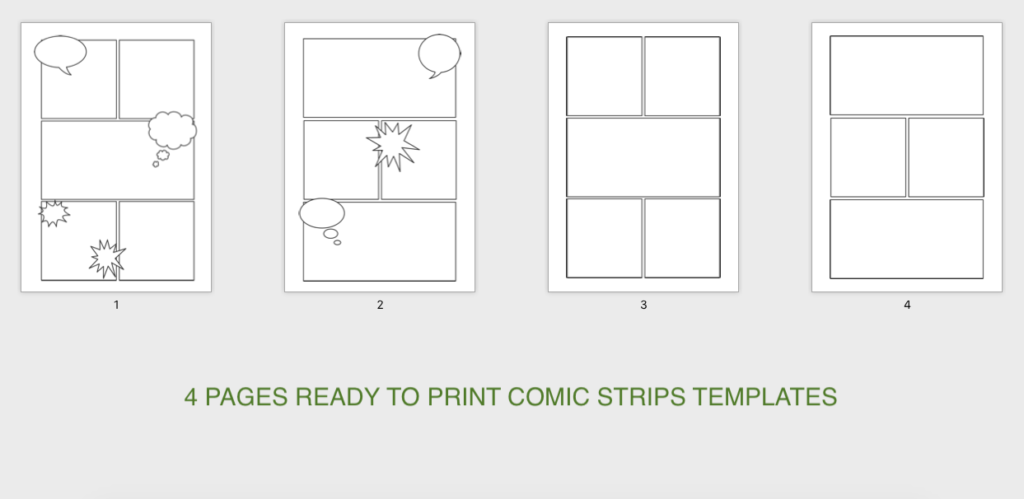
Comic Strip Templates Free 4 Pages
More collection of the templates. there are 4 pages. Two of them are with speech bubbles.
Do you know what comic strip is?
Comic strips are collections of cartoon images contained in a box that can be used to create a story.
The satire style used in newspapers and the heroic storyline used in comic books are just a few examples of the many distinct comic strip styles.
They frequently use boxes to depict new events or actions, which is a popular creative pattern. Cartoon and comic strip characters are almost usually vivid and interesting. The majority of the time, kids speak in what we refer to as “speech bubbles.”
It’s simple to communicate artistic ideas and foster creativity by creating your own comic strip using our templates. They’re a terrific method to provide kids a place to combine their writing and drawing skills.
Why not have your kid or the class try to create their own cartoon strip? It’s a terrific method to encourage creativity and help kids develop their imagination to use a template like the one offered.
My Personal Thoughts
Creating a comic strip can be a fun and engaging way to express your creativity and storytelling skills. Thanks to modern technology, there are now many tools and resources available to help you bring your comic strip ideas to life. One such resource is a comic strip generator, which allows you to quickly and easily create your own comics using pre-designed templates and tools. Whether you’re a seasoned comic creator or just starting out, a comic strip generator can be a valuable tool to have in your arsenal.
When designing a comic strip layout, it’s important to consider the overall structure and flow of the story you’re trying to tell. A well-designed layout can help to guide the reader through the narrative, emphasizing important moments and keeping them engaged from panel to panel. One way to achieve a strong layout is to use printable comic strip templates, which provide a pre-designed framework for your comic and can save you time and effort in the planning process. Blank comic strip panels can also be useful for customizing your layout and making it your own.
A comic strip storyboard is an essential tool for planning and organizing your comic before you begin drawing. This storyboard acts as a visual map of your story, outlining the plot, characters, and overall structure of the comic. Using a comic strip maker or other digital tool can make the storyboard process easier and more efficient. Cartoon panel templates and speech bubble templates can also be useful in creating a cohesive and visually appealing storyboard.
A strong comic strip design is key to making your comic stand out and grab the reader’s attention. Consider the overall aesthetic of your comic, including the style, color scheme, and typography. Using a graphic novel template or comic strip storyboard template can help to establish a consistent design throughout the comic, while comic strip frames and sequential art templates can be used to create dynamic and engaging visuals.
Whether you’re creating a manga-inspired comic or a classic American-style strip, a comic strip drawing template can be a useful starting point for bringing your ideas to life. Printable cartoon panels and comic strip outlines can also be helpful in creating a polished and professional-looking final product. When designing your comic strip pattern, keep in mind the pacing and flow of the story, and use a comic strip storyboard layout to help visualize how the final comic will look and feel. With the right tools and resources, anyone can create a compelling and engaging comic strip.
Important elements of Comic
Comics, also known as graphic narratives, are a form of storytelling that uses sequential art to convey a narrative. The elements of comics can vary depending on the style and format of the comic, but some common elements include:
- Panels: The individual frames or boxes that contain the artwork and text.
- Gutters: The spaces between panels where the reader’s imagination fills in the action that happens between them.
- Speech balloons: The bubbles that contain dialogue spoken by characters.
- Thought balloons: The bubbles that contain a character’s thoughts.
- Sound effects: The onomatopoeic words that represent sounds in the comic, such as “pow,” “bam,” or “zap.”
- Captions: Text boxes that provide additional information, narration, or commentary on the story.
- Characters: The people or creatures that populate the story and interact with each other.
- Setting: The time and place in which the story takes place.
- Plot: The sequence of events that make up the story.
- Themes: The underlying ideas or messages conveyed by the story, which may include social commentary, satire, or personal reflection.
Overall, comics are a highly visual and imaginative medium that combines words and pictures to create a unique form of storytelling.
What is the purpose of this blank comic strip template?
This blank comic strip template is an excellent resource that can be used for a variety of purposes. Comic strip templates are helpful tools that may be utilized while creating comic strips. Comics may be used for a variety of objectives, including amusement and information delivery in an entertaining fashion.
Allow children to create their own comic strips using these templates to encourage student creativity and fine motor skills. They include square spaces for students to draw their own comics, as well as text boxes below each space for students to explain what is going on.
Show them how to insert speech bubbles into each of the boxes in these strips to create an intriguing discussion. Allow them to color their comic strip for added detail. This can help to broaden and enhance advanced vocabulary grammar and story-telling abilities.
How can I put this blank comic strip template to use at home?
For almost a century, children have enjoyed comic strips or cartoon comics. They’re a great method to improve your reading abilities while also enjoying a great narrative with colorful images. They often have a pretty consistent format, with a sequence of images depicting characters and their dialogue in “speech bubbles.”
Some of the most popular and successful movies have been adapted from popular comic strips. Marvel Avengers, Spiderman, Batman, Superman, and the X-Men all began as comic books.
Children will enjoy using this blank comic strip template at home to create their own stories. Why not ask your child to sketch anything related to an event or experience, such as a vacation or a day out?
This is an excellent opportunity for your youngster to communicate their feelings and views regarding their experiences. Suggest that the children keep their comics secure so that they can refer to them later.
Some youngsters may like collecting comics and cartoons, and certain vintage comics are now worth a lot of money, so it may be a fantastic investment!
How to Create Your Own Comic Strip Dialogue
You can use paper, pencils, crayons, and markers, computer word processing programs, or an app.
Allow the person you’re helping to choose the materials they want to use.
Some people like to keep their comic strip dialogues in a notepad or on their smartphone or tablet, so they may refer to them as required and quickly recall essential themes.
With this entertaining comic strip template, you may assist your children say “Happy Father’s Day.” Children will use this project to make their fathers and/or father figures the heroes of their comic books. Inspire imagination in your ELA teaching by using this narrative and sequencing template.
Encourage your students to be as creative as they can, and hang their final comics on the classroom wall. With these printable magazine article templates, you can turn your pupils into junior journalists! Children will compose an article regarding a topic of their choice using our teacher-created sheets.
They can select a real-world theme, such as climate change or activities, or they might write a fictitious narrative. Ideal for K-5 ELA classes. These vivid cut-outs are an excellent way to liven up your classroom.
Students can benefit from
Comic strips are a useful educational tool for students of various grades to utilize in class. They frequently convey messages or offer a quick summary of events or tales. Comics contain all of the tale components – character, place, issue, and solution – in a few frames via a combination of pictures, captions, and dialogue, thus being ideal for use in class while working on these aspects. They are also an excellent approach to encourage reluctant authors to start a tale with the beginning, middle, and conclusion in mind. Utilize these Comic Strip Templates to assist your students create their own comic-style narrative material. The comic might be around them or about any additional characters they create.
What teachers say
Users have left positive comments thanking the provider of free comic strip templates for helping them with various assignments and projects. They express gratitude for the ease of downloading the templates and their usefulness in different scenarios, such as book studies, graphic novel units, and home learning. Some users specifically appreciate the ability to print the templates in larger sizes.
Users seem to be very appreciative of the fact that the comic strip templates are free and readily available, and they mention that they are helpful in facilitating creative expression and learning in the classroom. Some users specifically mention that the templates are useful for students who are reluctant writers or who struggle with traditional writing assignments. Overall, the comments express a sense of gratitude for the resource and highlight the positive impact it has had on the users’ teaching and learning experiences.
The templates are easy to use and provide layout designs that students can use to organize their ideas. users show that the templates are suitable for different grade levels and can be used for various subjects such as literature, history, and computer classes. I recommend using PowerPoint to create the comic strips instead of Word. Some users had issues downloading the templates, but then I suggest using a different browser or making sure pop-ups are not blocked. I allow the templates to be used in virtual classrooms or posted on a private Facebook page for parents. However, they are not for commercial reuse.
Aliv Faizal M
I am a teacher who loves to use technology. I like to design templates in Google Docs, Google Slides, Powerpoint, Word, CorelDraw, etc.
Related Posts

Brochure Template Google Docs | Slides: Trifold, Bifold [FREE]
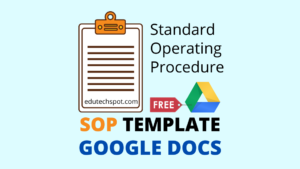
SOP Template Google Docs
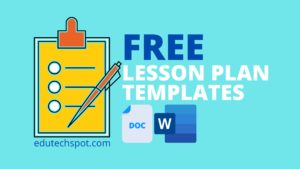
Lesson Plan Templates for Google Docs Users
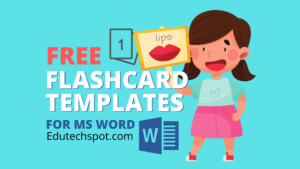
Free Flash Card Template for Word

FREE OnlyFans Menu Template Ideas with Neat Price List
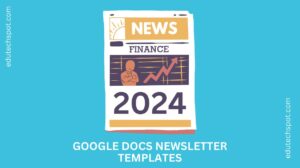
Google Docs Newsletter Templates – LAST CHOICE
The Center for Cartoon Studies
Teaching comics.
This page both archives teaching content from National Association of Comics Art Educators, along with dozens of additional teaching comics resources for all ages developed by The Center for Cartoon Studies community. In recent years the comics medium has flourished, generating much interest from the literary, art, and educational communities. This site will continue to expand with more content as it is developed. Recommended grades, along with Common Core subjects are noted on several resources.
For more information or suggestions, contact [email protected]
Teaching Resources
• Individual Exercises • Complete Lesson Plans • Study Guides and Handouts • Complete Syllabi • Books and Magazines
- Individual Exercises
This section contains a list of short exercises. This material has been contributed by various cartoonists and educators. All items are available in printer-friendly adobe .PDF format.
• The Wrong Planet: Timing, Closure and Editing contributed by Paul Hluchan • Design Vs. Drawing contributed by James Sturm • It’s Easy as Changing the Film contributed by Patrick Welch • Editing contributed by James Sturm • Show Time Passing contributed anonymously • Basic Storytelling… Lights, Camera, Action! contributed by Patrick Welch • Intro to Lettering contributed anonymously • Intro to Inking contributed anonymously • Describing the Complex World contributed by Patrick Welch • Silent Gag Cartoon Exercise contributed anonymously • Poetry and Comics contributed by James Sturm • Comic Strip: Character/Place/Situation contributed anonymously • The Irony of Humor contributed anonymously • Autobiography Do’s and Don’ts contributed anonymously • Think Before You Ink contributed by James Sturm • Scenes as Building Blocks contributed by Tom Hart • 20 Questions for Characters contributed anonymously • Intro to Caricature contributed anonymously • Character Exploration Initial Writing Exercises contributed by Tom Hart • Form and Chaos contributed anonymously • A Definition of Comics contributed by James Sturm • Closure Exercise contributed anonymously [ closure_handout ] • Expressive Lettering and Balloons contributed anonymously [ lettering_template ] • Iconographic Language in Comics contributed anonymously • Cartoon Characters Doodled from Memory contributed by Ivan Brunetti • Practicing Text-Image Relationships contributed by Christian Hill
Back to the top ↑
Complete Lesson Plans
This section contains a list of lesson plans. This material has been contributed by various cartoonists and educators. All items are available in printer-friendly adobe .PDF format. Each lesson plan has, listed after its title, a grade range for which the exercise is most appropriate. Many lesson plans, though, can be modified to suit older or younger classes as needed.
- Little Orphane Annie: Leapin’ Through the Depression contributed by Joanna Boyd Richards [ sample Annie strips .pdf 2.4MB]
- Teaching Literary Devices with Comics contributed by Nancy Frey and Doug Fisher [ sample narrative .pdf 2MB]
- The Serious Business of Graphic Novels contributed by A. David Lewis [ slideshow .ppt 8.5MB]
- Creating and Self-Publishing Your Minicomics contributed by Mac McCool
- Study Guides and Handouts
This section contains study guides which are geared toward English/literature classes as well as a studio environment. Also available here are handouts useful for class discussion. Several of the study guides contain reading questions designed to facilitate the teaching of prominent comics works. All items are available in printer-friendly adobe .PDF format.
Study Guides: • The Complete Peanuts Volume I by Charles M. Schulz contributed by Art Baxter • Buddy in Seattle by Peter Bagge contributed by Ben Towle • Above and Below by James Sturm contributed anonymously • Locas: The Maggie and Hopey Stories by Jaime Hernandez contributed by Art Baxter • Jimbo in Purgatory by Gary Panter contributed by Joel Priddy • You Can’t Get There From Here by Jason contributed by Christian Hill • Flies on the Ceiling by Los Bros Hernandez contributed by Rocco Versaci • My Troubles with Women by Robert Crumb contributed by Rocco Versaci • Ghost World by Dan Clowes contributed by Rocco Versaci • Daddy’s Girl by Debbie Drechsler contributed by Rocco Versaci • Sandman: Fables and Reflections by Neil Gaiman contributed by Rocco Versaci • Palestine by Joe Sacco contributed by Rocco Versaci • Watchmen by Alan Moore and Dave Gibbon contributed by Rocco Versaci • Maus by Art Spiegleman contributed anonymously
Handouts: • The Creation of a Page contributed by Tom Hart • Three-Act Story Structure contributed anonymously • Women in Comics: An Introductory Guide contributed by Trina Robbins • Critique Talking Points contributed anonymously • Usagi Yojimbo: Step by Step contributed by Stan Sakai • Mix and Match Rows: Comics Handouts for Younger Students contributed by Ben Towle • Comics Terminology contributed anonymously • How To Read Nancy contributed by Mark Newgarden and Paul Karasik
- Complete Syllabi
In this section you will find a number of complete course syllabi, most if which are intended for teaching at the undergraduate level. The syllabi are divided into sections for studio classes and non-studio classes and have been contributed by instructors from institutions such as Yale, The Savannah College of Art and Design, The University of Florida, and The Massachusetts Institute of Technology, as well as others.
- Comics As Literature contributed by Rocco Versaci
- Comics and Animation contributed anonymously
- Comics in American Culture contributed by Professor Touponce
- Media in Cultural Context: Comics, Cartoons and Graphic Storytelling contributed anonymously
- Survey of Sequential Art contributed anonymously
- Writing About Comics contributed anonymously
- Writing Scripts for Comics contributed by Mark Kneece
- Introduction to Comics Art: Gateway to Visual Storytelling contributed anonymously
- Reading Comics as Literature contributed by Isaac Cates
- Studies in Literature and Culture: The Graphic Novel contributed anonymously
- Comics Studio Class contributed anonymously
- Explore Chicago: The Art of Chris Ware contributed anonymously
- An Aesthetic History of Comics contributed by Dan Nadel
- History of Comic-Book Art contributed by Andrei Molotiu
- Image, Text, and Story: An Exploration of Graphic Novels contributed by Rachel Williams
- Books and Magazines
The reference material here consists of books and magazines which may be useful to educators teaching classes in comics or cartooning. Most of the items listed are instructional in nature, but a few are critical or analytical texts relating to the cartooing artform; Scott McCloud’s Understanding Comics is probably the most well known of these. Several items listed are currently out of print, but reasonably priced copies can usually be located via bookfinder.com .
The Arbor House Book of Cartooning by Mort Greenberg ISBN 0-87795-399-6 New Yorker cartoonist Greenberg shares his knowledge in this comprehensive volume. There seem to be thousands of these “how-to cartoon” books. This (along with Polly Keener’s book) is one of the better ones.
The Art of Comic Book Inkin g by Gary Martin ASIN: 1569712581 Pretty good introduction to inking tools and concepts. Especially good at identifying methods of implying shade and weight on a human figure. A number of variations on the same pencils by differing comic book inking pros offer a good look at many ways a page can be successfully inked.
The Art of Dramatic Writing by Lajos Egri ISBN: 0-671-21332-6 A seminal 20th century book on playwriting, and the introduction to the “dramatic statement” inherent in any play. The book is very instructive in looking at the elements of your story and examining which are contributing to the greater theme, and which are not. Like David Mamet’s book, it has little room for other opinions of how drama is constructed but certainly presents its own thesis clearly and completely.
Cartooning by Polly Keener ISBN: 0131179128 Although geared towards gag cartooning and comic strips, this book offers a great deal of information from generating ideas to tools and techniques. Covers a lot of the same ground as The Arbor House Book .
Comics and Sequential Art by Will Eisner ISBN: 0961472812 Taken from Amazon.com reader reviews: “Written years before Scott McCloud’s “Understanding Comics,” Will Eisner expounds upon how comics are a visual, reading experience using both words and pictures. He instructs the reader in how words and pictures can be used together to tell a story. The author must lead the reader with visual clues to each sequential image. Mood, emotion, even time can be expressed visually in a comic. Camera angles, panel borders, typefaces, all play a part in the effectiveness of a story.”
Comix 2000 by L’ Association Editors Essential cross section (2000 pages) of silent comics from across the globe. Countless examples of innovative silent storytelling.
The DC Comics Guide to Pencilling Comics by Klaus Janson ISBN: 0-8230-1028-7 Klaus Janson’s book is a distillation of all his techniques and theories. A great book divided into 3 parts: drawing, storytelling and pencilling. Drawing focuses mostly on human anatomy. In Storytelling, he discusses the art of panel juxtaposition, including a nuanced look at juxtaposing unrelated images. He also offers an extensive and detailed look at panel arrangement, including composition both on the page and within the panel. The pencilling section offers a look at Janson’s process on an entire short story, from script to finishes. Overall intelligent, humble, and masterful.
Drawing Comics Lab: 52 Exercises on Characters, Panels, Storytelling, Publishing & Professional Practices (Lab Series) ISBN: 9781592538126 This easy-to-follow book is designed for the beginning or aspiring cartoonist; both children and adults will find the techniques to be engaging and highly accessible.Featured artists include:- James Stu
DRAW! Magazine Quarterly , published by: TwoMorrows Publishing PO Box 2129 Upper Darby, PA 19082 This weighty magazine features numerous useful columns each issue. Past columns have included an extensive look at inking by Klaus Janson, a look at character design by Genndy Tartakovsky (creator of Cartoon Network’s Samauri Jack ), an article on observation and set design by Batman set designer Paul Rivoche, and figure drawing by Brett Blevins.
Graphic Storytelling by Will Eisner ISBN: 0961472820 From the publisher: “A companion to Comics & Sequential Art , this book takes the principles examined in that title and applies them to the process of graphic storytelling. Eisner shows comic artists, filmmakers and graphic designers how to craft stories in a visual medium. They’ll also learn why mastering the basics of storytelling is far more important than the hollow flash and dazzle seen in lesser work. Readers will learn everything from the fine points of graphic storytelling to the big picture of the comics medium, including how to: * Use art that enhances your story, rather than obscuring it * Wield images like narrative tools * Write and illustrate effective dialogue * Develop ideas that can be turned into dynamic stories. These lessons and more are illustrated with storytelling samples from Eisner himself along with other comic book favorites, including Art Spiegelman, Robert Crumb, Milton Caniff and Al Capp. “
The Hero with a Thousand Faces by Joseph Campbell ISBN: 0691017840 Seminal and definitive look at world mythology and the “shared stories” therein. From African mythology, to Norse, to American Indian, the elements of myths are often similar. Campbell outlines these and as such, furthers Jung’s mapping of humanity’s unconscious hopes, desires and fears.
On Directing Film by David Mamet ISBN: 0140127224 There is no better description (told in essay form and also transcribed dialogues with his students) of how to proceed from an idea to a no-nonsense visual, dramatic rendition of that idea. The book is a perfect expression of its goal to outline the thinking steps involved in planning out a scene or series of scenes. For Mamet, all the expression lies in the script and in the SHOT LIST. Even his use of actors (as people who just get up, hit their marks and say their lines and shut up) is extreme. Nonetheless, he is completely self-assured of his points of view, and in learning his method of outlining a scene before beginning the filming or drawing, I can’t imagine a better explanation.
Perspective for Comic Book Artists by David Chelsea ISBN 0-8230-0567-4 Both an introduction and comprehensive course in perspective tailored specifically for Comic Book artists (and told in comics form.) People who don’t know perspective will finally learn what they’ve been doing right. Even those that think they know perspective will probably walk away with their heads spinning and full of new insights. Exhaustive and somewhat confusing if you don’t want to do the math.
Smithsonian Collection of Newspaper Comics by Bill Blackbeard ISBN 0-87474-172-6 Essential introduction to the comic strips of the early 20th century.
Story by Robert McKee ISBN 0-06-039168-5 One of the world’s premiere screenwriting teachers dissects and defines the elements of a story. Sort of the Understanding Comics for screenwriters.
Syllabus by Lynda Barry ISBN 1-77046-161-2 Barry teaches a method of writing that focuses on the relationship between the hand, the brain, and spontaneous images, both written and visual. It has been embraced by people across North America—prison inmates, postal workers, university students, high-school teachers, and hairdressers—for opening pathways to creativity.
Wishes, Lies, and Dreams: Teaching Children to Write Poetry by Kenneth Koch ISBN 0-05-080530-7 A classic in its field, this book is a vivid account of a poet’s experience teaching Manhattan schoolchildren to write verse. The book provides great ideas for creating assignments that excite students and get the creative juices flowing.
The Writer’s Journey: Dramatic Structure for Storytellers by Christopher Volger ISBN: 0941188701 Overview of Joseph Campbell’s “Hero’s Journey” ideas and their use in Hollywood storytelling. Though simplistic, it is surprisingly useful if used correctly, meaning not as formulae, but as dramatic tools. Outlines a series of 12 steps in many stories — exemplified by Wizard of Oz but also evident in Titanic and surprisingly, even Tarantino’s Pulp Fiction. All in all a good job of cracking open the traditional story structure and peeking inside.
Writing Down the Bones by Natalie Goldberg ISBN 0-87773-375-9 Lots of exercises to get writers going. Exercises, like the Kenneth Koch book, can be easily translated for a comic artist.
The Writing Life by Annie Dillard ISBN 0-06-016156-6 A great writer writing about the creative process. Dillard offers bits of technical information but more importantly she lays out a realistic perspective on the trials and challenges of making art and the dedication needed to persevere.
Understanding Comics by Scott McCloud ISBN: 006097625X Comprehensive examination of the mechanics of the art form; from mapping of iconographic imagery to an new nomenclature for transitions between comic panels (and a mapping of those as well.) Great overview and introduction to the intellectual tools involved in creating comics.
Your Career in Comics by Lee Nordling ISBN 0-8362-0748-3 If you want to make it as a comic strip artist, then this is the book for you. Nording looks at cartooning from three perspectives: the cartoonist’s, the newspaper editor’s, and the syndicate editor’s. He interviews dozens of professionals providing both a broad-based view of the art form and the nitty gritty of fashioning a solid comic strip.
- Promoting a Comics Curriculum
One of the primary the goals of NACAE was to assist educational institutions and individual educators interested in establishing a comics art curriculum. The materials below are collected from various sources and outline some of the advantages of implementing sequential art/comics art classes and curricula.
- A Case For Comics contributed by James Sturm
- Seika University’s Department of Comic Art contributed by Matt Thorn
- How Comic Books Can Change the Way Our Students See Literature: One Teacher’s Perspective contributed by Rocco Versaci
- Comics in the Classroom contributed by James Sturm
- Interview with Michael Bitz of The Comic Book Project contributed by Christian Hill
Using These Materials
Q: How am I allowed to use the material on this page?
A: Unless otherwise noted, materials on this page are free to use, reproduce, and distribute as long as they are being used for non-commercial educational purposes. Please follow these guidelines when using these materials:
- You may not use any materials contained on this site for commercial purposes
- You must attribute the work as described below
- If you alter, transform, or build upon this work, you may distribute the resulting work only under a license identical to this one.
- To properly attribute content copied, distributed or displayed from this site, include the following information: Copyright © [name of originating author] via NACAE
Connect with Us
Mfa and certificate program, make a gift to ccs, online and in-person workshops, join ccs enews, cartoon club, the schulz library, free one-week cartooning workout, a free one-week cartooning workout.
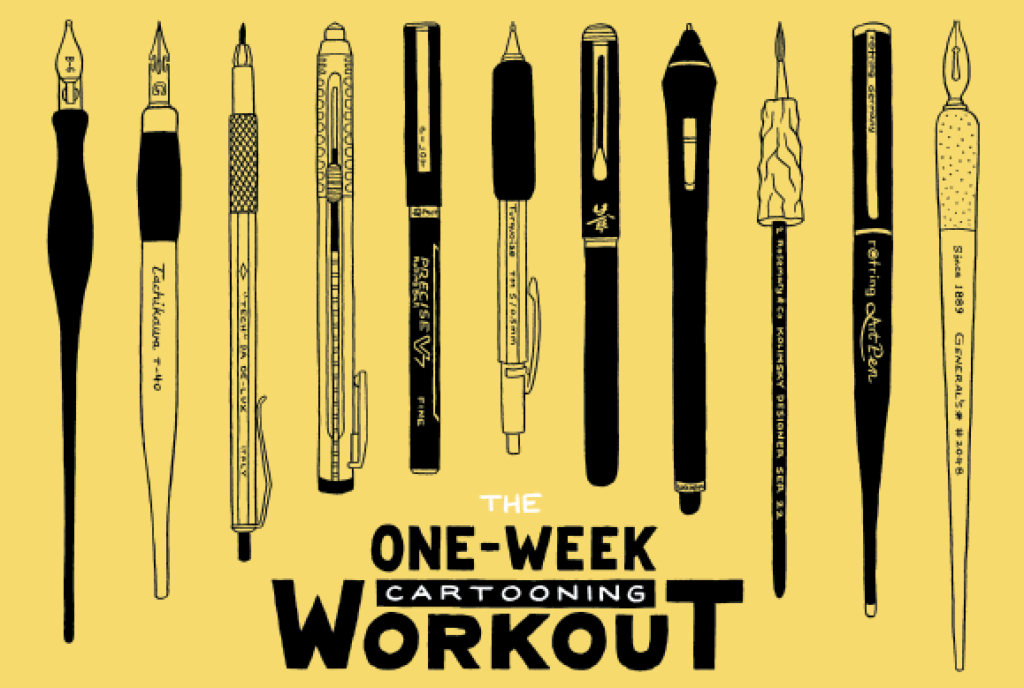
A free self-directed eCourse to improve your cartooning skills. Online, Start Anytime !
THE ED KOREN SCHOLARSHIP FUND
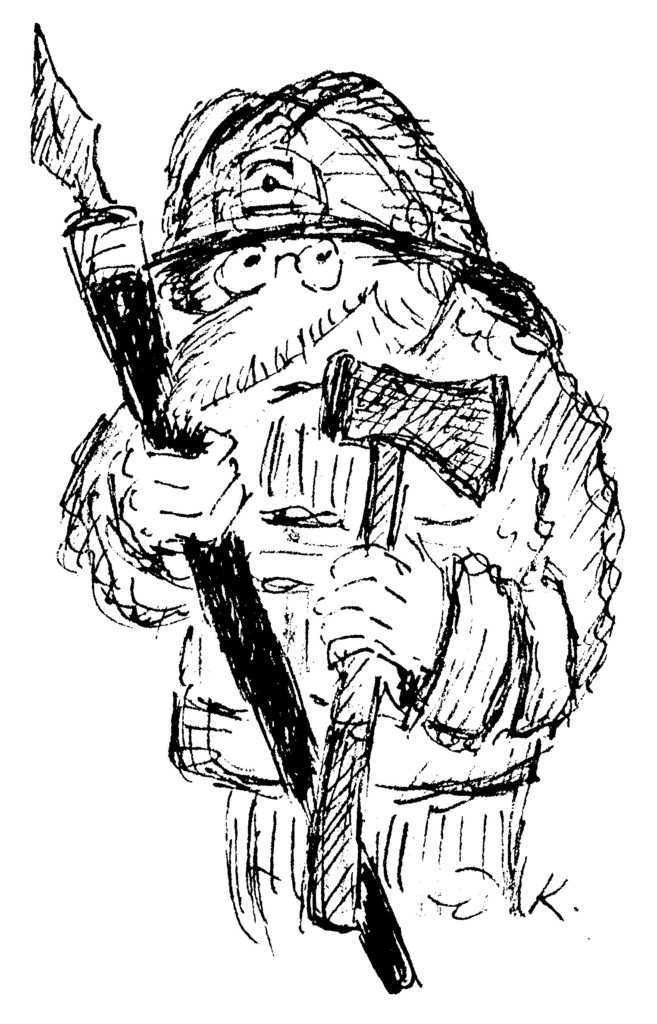
Click here to learn more and make an online donation now.
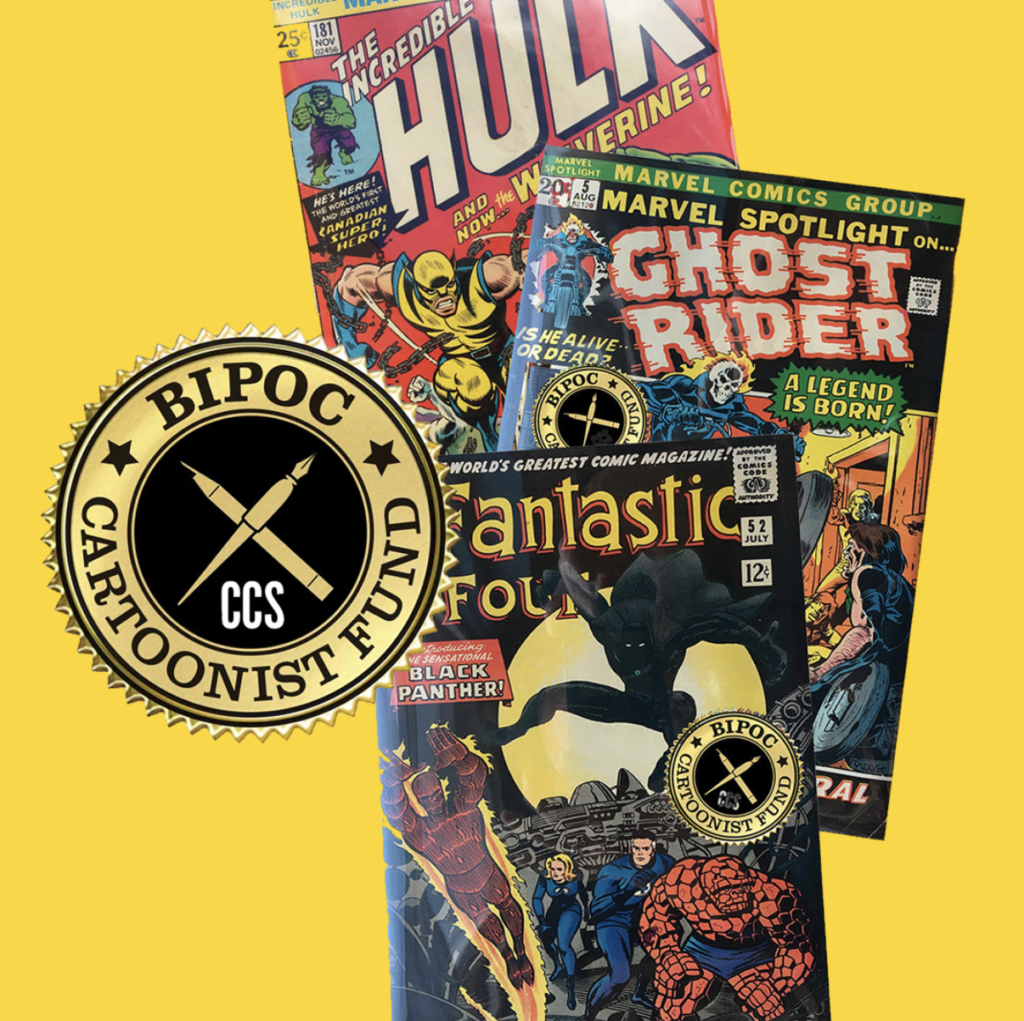
BIPOC Cartoonist Fund Accepting Donations
CCS wants your old comics! These comics and many more were donated to support CCS's BIPOC Cartoonist Fund. If you're interested in making a comic book or cash donation drop us a line .
FREE COMICS
Cartooning in an anxious age.
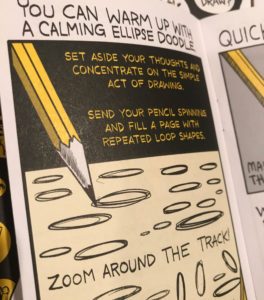
Cartooning In An Anxious Age (pdf) is a free comic by Cara Bean on the act of drawing, which focuses your attention and intimately connects you with the generative act of creation. It’s an inspiring read.
Let's Talk About It: A Graphic Guide to Mental Health
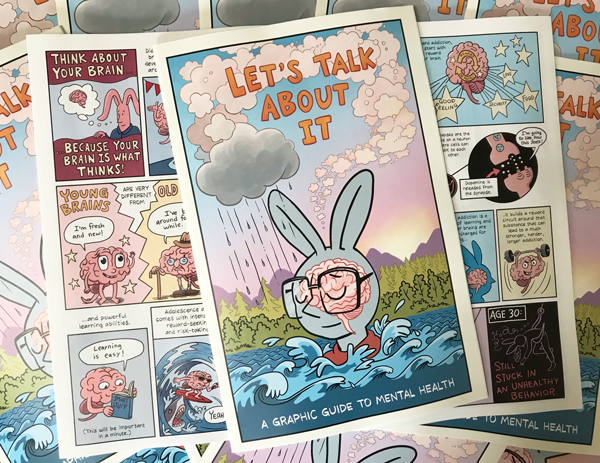
Created for middle and high school students, Let’s Talk About It: A Graphic Guide To Mental Health is a lively and educational comic book that destigmatizes the conversation around mental health.
A 32-page comic on how our government works
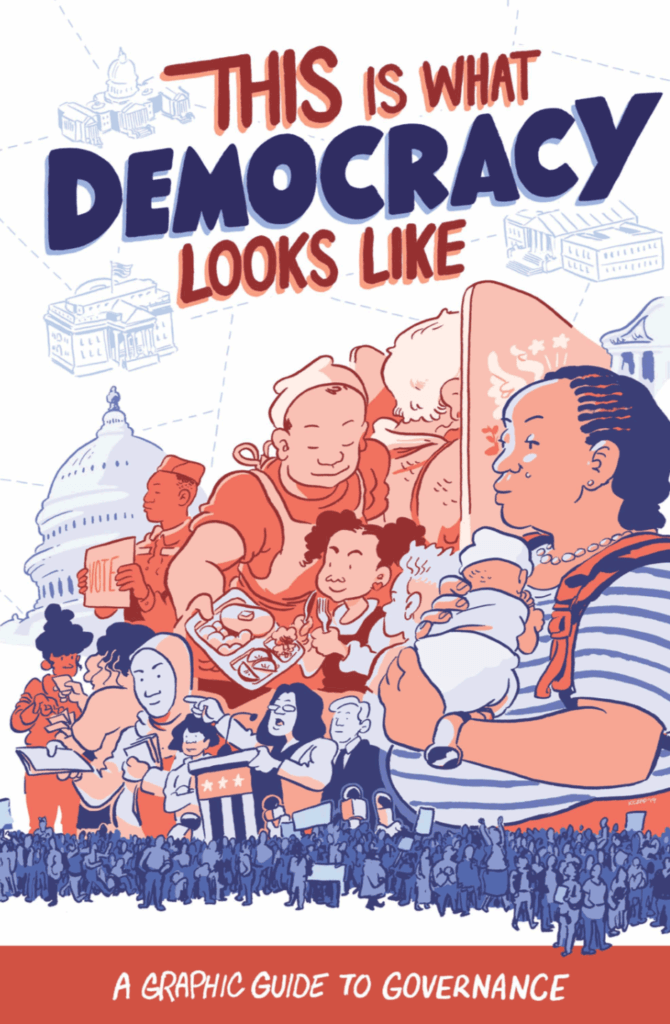
Using the power of comics to teach teens about the way our government works This Is What Democracy Looks Like, A Graphic Guide To Governance is a 32-page comic book created by The Center for Cartoon Studies (CCS). This short comic guide helps to bring democracy back to the hands of the people by explaining what democracy actually means and how the whole thing works. This guide will be a great jumping-off point to learn about our government.
- Lesson Plans
The Applied Cartooning Manifesto
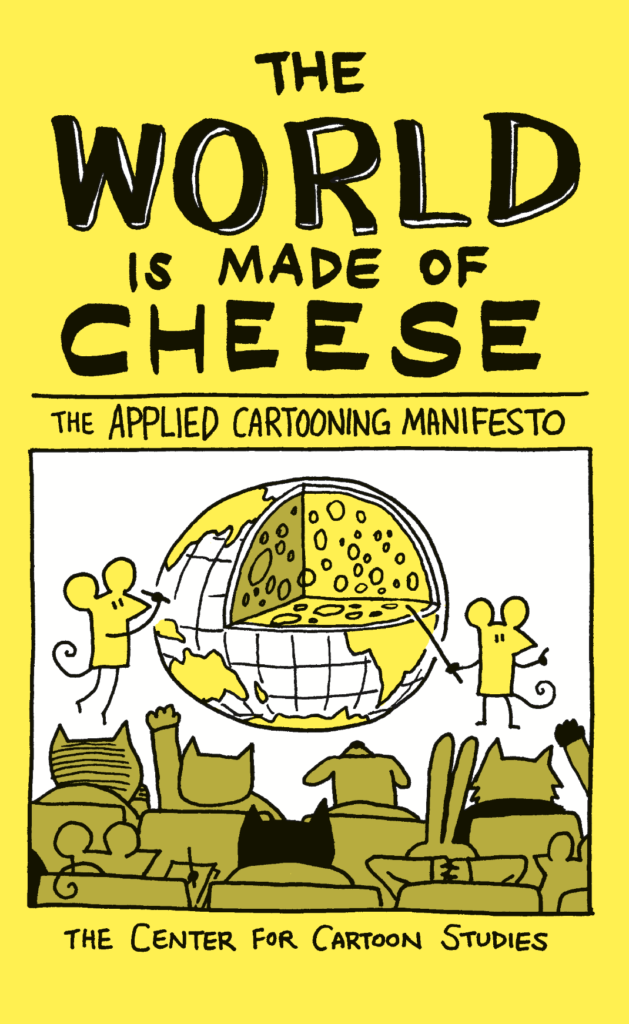
Download a free copy of The World is Made of Cheese, The Applied Cartooning Manifesto.

© The Center for Cartoon Studies PO BOX 125, White River Junction, Vermont 05001 [email protected] 802.295.3319
Click around this comic to randomly explore
Bring out the storyteller in everyone
Show what you know and express how you feel though comic creation with authentic avatars. Try it free!
Pixton named Best Digital Tool for Teaching & Learning by the AASL
Proven to work
/Main%20Landing%20Page%20(Educators)/Awards/ESSA%20Badge.png)
Create an Account
Choose the one that best describes you :
Important! If you’re a grade school student and you create an Educator account, we will have to delete it.

Teach Starter, part of Tes Teach Starter, part of Tes
Search everything in all resources
Comic Strip Templates
Updated: 25 Jun 2024
Download a comic strip template pack to inspire creative writing in your classroom!
Non-Editable: PDF
Pages: 10 Pages
- Curriculum Curriculum: CCSS, TEKS
Grades: 1 - 7
Differentiated: Yes
- Adobe Reader (pdf) Sign up to Plus
Get inspired!
Tag #TeachStarter on Instagram for a chance to be featured!
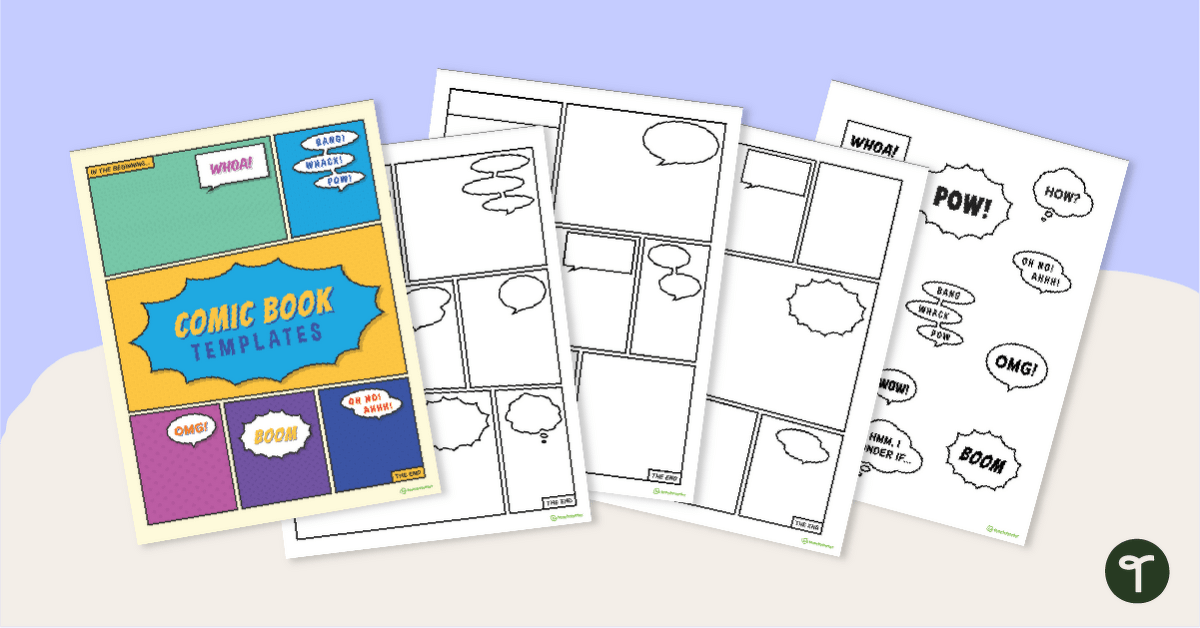
Fuel Creativity With Blank Comic Book Templates for Kids
Zap! Zoom! Bang! These printable comic book templates were made to fuel your students’ creativity! The blank comic book templates include 10 pages, providing a perfect comic strip template for students to fill with their drawings and dialogue as they practice creating the elements of a story frame by frame.
The printable PDF template includes:
- 1 Comic book cover page
- 3 Pages of blank comic strip frames
- 3 Pages of blank comic strip frames with speech bubbles included
- 1 Page of blank comic speech bubbles
- 1 Page of pre-filled comic speech bubbles in color
- 1 Page of pre-filled comic speech bubbles in black and white
Mix and match the comic book elements to suit your year level and the activity! Younger students can create short comics with just three frames to represent the beginning, middle and end of a story, while older students can fill a whole book depicting key moments of a historical event or develop a more detailed story.
Download and Print Your Comic Strip Template PDF File!
This printable resource is available as a printable PDF resource file. To get your copy, simply click the download button! Print, copy, and you’re ready to go!
Even More Handy Writing Templates for Kids
Looking for more? Make sure you check out these amazing writing templates before you go!
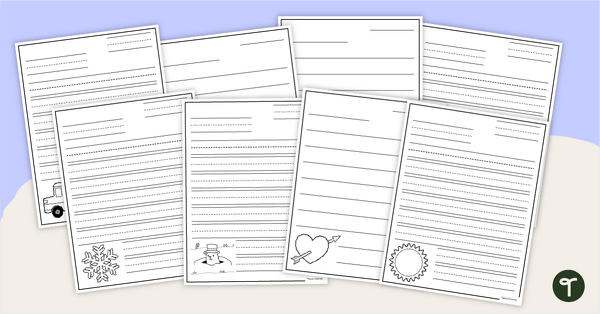
teaching resource
Themed letter writing template pack.
Print and use a letter writing template each month to encourage your students to write friendly letters.
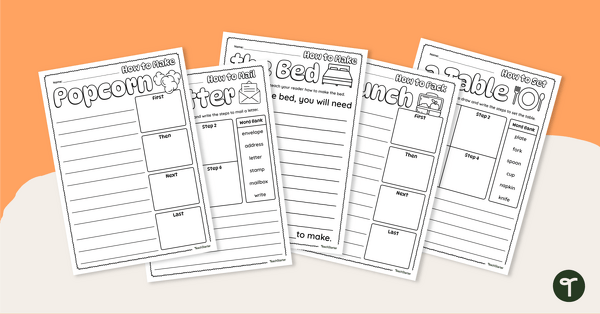
Procedural Writing Templates – "How to" Prompts
Get your students to write procedural texts with this set of differentiated procedure writing prompt templates.

Rainforest Bird Craft & Writing Template
Pair a fun bird craft and informational writing to create a fun jungle-themed bulletin board.
Teach Starter Publishing
We create premium quality, downloadable teaching resources for primary/elementary school teachers that make classrooms buzz!
Write a review to help other teachers and parents like yourself. If you'd like to request a change to this resource, or report an error, select the corresponding tab above.
Suggest a Change
Would you like something changed or customised on this resource? While our team makes every effort to complete change suggestions, we can't guarantee that every change will be completed.
Report an Error
Did you spot an error on this resource? Please let us know and we will fix it shortly.
Are you having trouble downloading or viewing this resource? Please try the following steps:
- Check that you are logged in to your account
- For premium resources, check that you have a paid subscription
- Check that you have installed Adobe Reader ( download here )
If you are still having difficulty, please visit the Teach Starter Help Desk or contact us .
You may also like
- English Language Arts →
- Types of Writing →
- Narrative Writing →
- Templates →
- Writing Templates →
- 1st Grade →
- 2nd Grade →
- 3rd Grade →
- 4th Grade →
- 5th Grade →
- 6th Grade →
- 7th Grade →
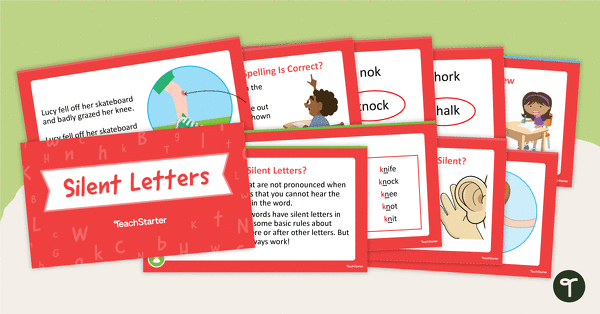
Silent Letters PowerPoint
A 24-slide editable PowerPoint presentation about silent letters.
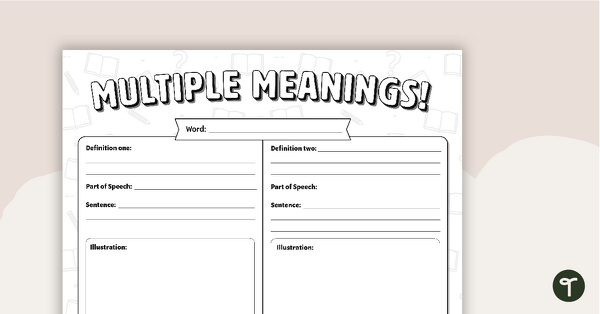
Multiple Meanings Vocabulary Worksheet
A worksheet to use in the classroom when identifying multiple-meaning words.

Bloom's Taxonomy Fast Finisher Task Cards - Upper Grades
44 Bloom's Taxonomy fast finisher activity cards.
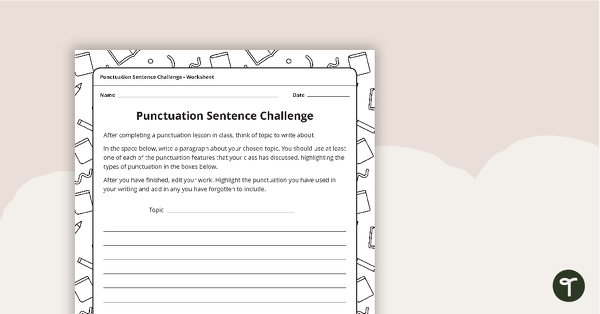
Punctuation Sentence Challenge Worksheet
A teaching resource to help consolidate the students’ knowledge of punctuation.
Common Core State Standards Progression Trackers - Kindergarten - Language
Individual student and whole class trackers using the Language Common Core Standards.
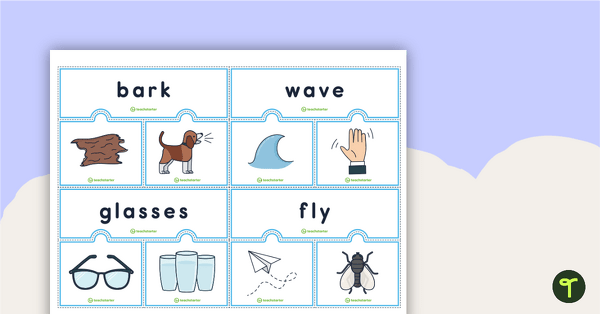
Multiple-Meaning Word Puzzles
16 puzzles to use in the classroom when identifying homonyms.
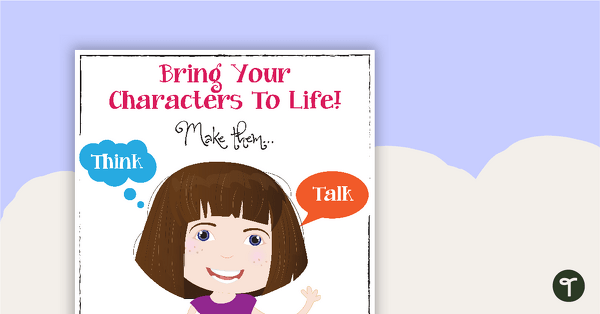
Bring Your Characters To Life Poster
A poster to remind your students to add detail and description to their writing to bring their characters to life.
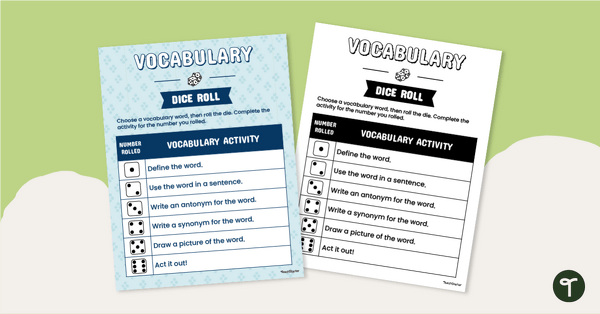
Vocabulary Dice Roll Activity
6 vocabulary activities to use with a range of words.
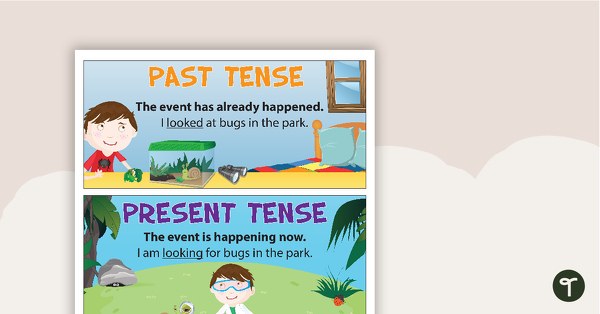
Past Tense, Present Tense and Future Tense Posters
A set of four posters providing simple descriptions and examples of past, present and future tense.

Verb Past Tense Worksheet
A worksheet with simple and irregular past tense verbs added to complete the sentences.
Choose an Account to Log In

Notifications
Create a comic strip.

When you think of writing skills, you probably remember long essays, research reports, tests, or other stressful school assignments. But communicating using the written word doesn't have to be tough! It can be as simple as telling a story, as rudimentary as writing a wish list, or as fun as composing a comic strip. And while these tasks may not sound like much, getting your child comfortable with writing, no matter the context, will help them find the fun in even the most challenging writing assignments down the road! Here's how to get your kid writing their own comic strip.
What You Need:
- Colored pencils or markers
- Drawing paper
- Newspaper comic strips
What You Do:
Look over the newspaper comic strips, and discuss some of the common features with your child. For example, they usually feature:
- 1-2 sentence conversations between characters
- 1 picture per frame with somewhat close-up perspective
- Humorous situations or dialogue
Brainstorm with your child to come up with a subject or scenario for their comic strip. Is the strip about the trials of being a kid? Is it about something that happened at school? Or does it take place in another location, such as outer space or the age of the dinosaurs? Encourage your child to be creative - there are no rules, and no one is grading them on their performance! Once your child has settled on a plan for the strip, they can get started on actually drawing it out.
Use the ruler to draw a rectangle the length of the paper, and divide the rectangle into 4-5 squares. Your child will need to make certain that the squares are large enough to draw the picture and add in the text while being both visible and legible.
Draw the picture that will go in each of the frames. Keep in mind the story that you are trying to tell, and make sure to save room for the speech bubble. Is the character angry? Amused? Bored? Try and convey your comic with words and pictures. Sometimes it is the contrast between text and image that is the source of the humor.
Write the sentences that go with each of the frames on a separate sheet of paper. (This is to let your child see if the sentence will fit into the available space.) Next, write the sentence into the appropriate frame, and draw a speech bubble (or thought bubble) around the text. If you wish, you can color the comic strip to give it "Sunday comic" flair.
Adaptations:
To expand on the complexity of this activity, your child can create their own comic book. The main difference in the activity is that your child will fold 7-8 pieces of paper in half, and then divide each page into 2-4 squares.
One other adaptation is to find a way to share the comic strip with others. Ideas for this include:
- Scanning the picture onto the computer.
- Taking a digital picture of the comic strip.
Once you have a digital copy of your strip, the sky's the limit! There are several ways to share your child's work, from emailing it to setting up a blog where it can be showcased.
Related learning resources
Add to collection, create new collection, new collection, new collection>, sign up to start collecting.
Bookmark this to easily find it later. Then send your curated collection to your children, or put together your own custom lesson plan.
- How-To Guides
How to Create a Comic Strip in 6 Steps
Everyone loves a good comic, whether you’re a comic book geek or just the casual reader of a comic in your local newspaper – Comic Strips are great! While some comic strips just take a few minutes or less to read, don’t underestimate the difficulty of creating one! And because May 5 th is comic book day, we decided to give you some step-by-step instructions for creating your first ever comic strip. Follow these instructions and you’ll be creating awesome comic strips in no time! Here is how to create a comic strip in 6 simple steps.
What is a comic strip?
Step 1: write your ideas for your comic, step 2: draw the three-frames, step 3: use basic shapes to draw, step 4: add in the speech and lettering, step 5: add detail to your cartoon, step 6: go over your comic in pen, how to make a comic book, how to draw comic strip characters, comic strip ideas, comic strip examples, are you ready to create a comic strip.
A comic strip is a sequence of images with a small amount of text in each box. This text is normally inside balloons or written as captions. Comic strips (or comic books) are a form of story-telling, which uses drawings or cartoon characters to tell a story. Most comic strips are created for humour, while some can be serious.
Comic strips are most likely to be seen in newspapers or magazines. While entire comic books or graphic novels can be found at your local library or bookstore. Superman is one of the best-selling comic books of all time. You might know of other examples of comic strips or books that you’ve seen or read.
In the professional world, comic strips or comic books are created by cartoonists or professional graphic artists. But today we’ll show you how to create your own comic strip at home with no experience needed!
How to create a comic strip
As this is your first-ever comic strip we will focus on creating a three-frame comic. But when you become a master at creating short comic strips, you can make yours much longer and filled with way more characters.
A comic strip is no different from writing a short story . It still needs a beginning, middle and ending. Because this is a three-frame comic strip, break your story down into 3 parts. Write down your ideas for the characters, settings, expressions and even speech. Make sure each part has some action and that your ending is powerful with an awesome punchline.
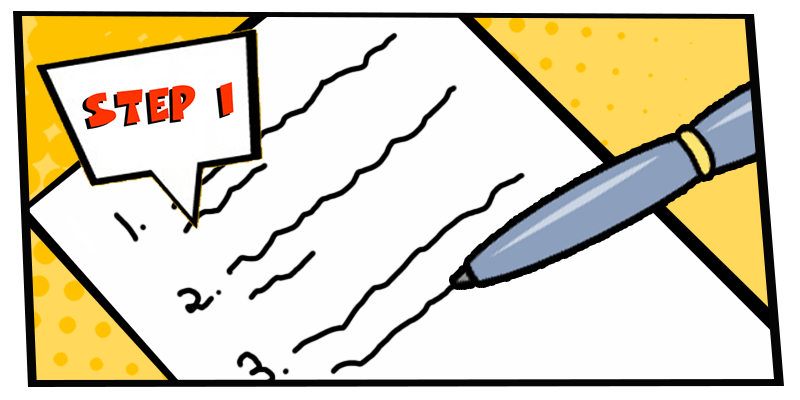
On a new piece of plain paper, draw your three frames using a pencil and a ruler. Make sure each frame is equal size. You can even put small light marks on the paper to mark out where the speech bubbles will go. As a bonus tip, you might want to make your frames twice as big as you want them to be, so you don’t run out of space.
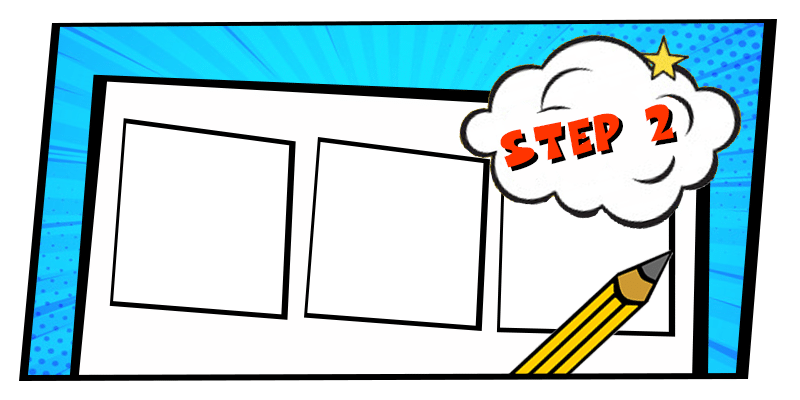
Don’t want to draw your own comic strip frames? Check out this highly-rated blank comic book for kids on Amazon (Amazon Affiliate link):
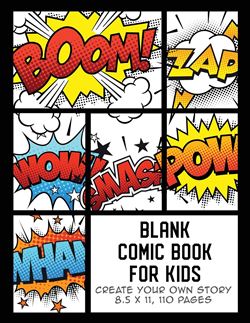
This is a whole book filled with blank comic strip grids. All your kids need to do is draw in their comics and they’ll have a complete comic book in no time!
One of the hardest parts of creating a comic strip is drawing out your characters. We recommend you use basic shapes to draw out your characters. As this is your first comic strip you might even want to use stick figures to keeps things easy. Also, sketch in the speech bubbles and any starbursts for sound effects. Oh and don’t forget, please use a pencil at this stage, so you can erase any mistakes.
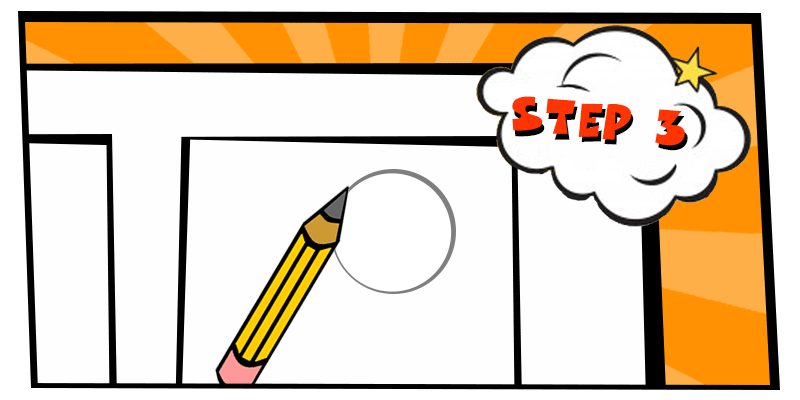
Now add in the lettering for your speech into your speech bubbles and don’t forget to double-check your spelling. Remember the size of your lettering could show whether a character is shouting or whispering. For example, lettering in full capitals shows that your character is shouting.
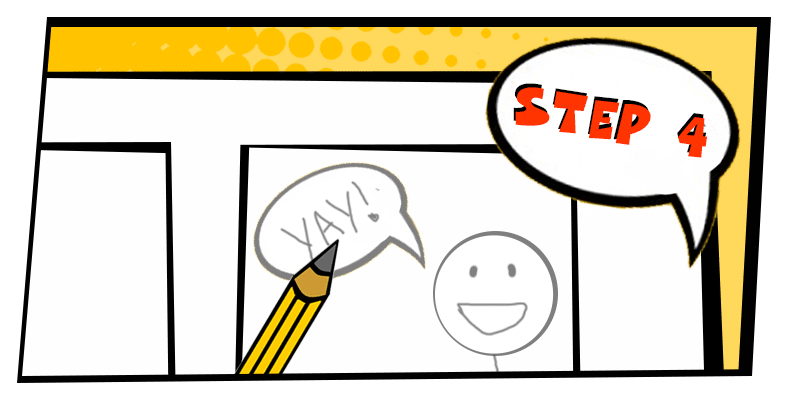
Now go back to your characters and add any extra details, such as facial expressions, movement lines, and shadowing on the floor. And also draw in the background for each frame.
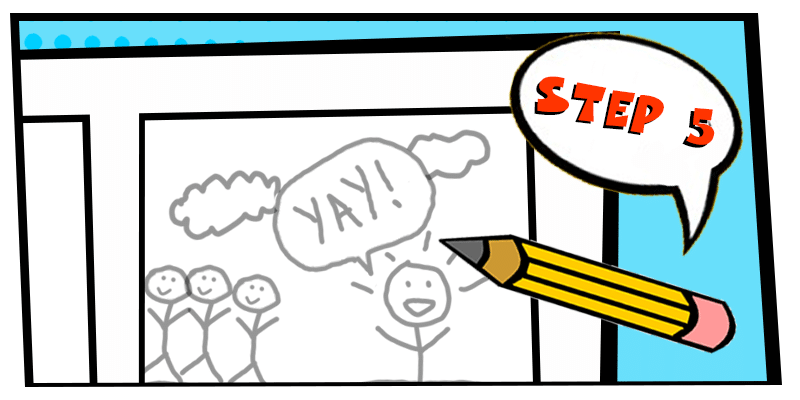
Now, you can finally use a felt-tip pen to go over your pencil drawings and rub out any pencil lines. Your first-ever comic strip is now complete – well done! You can leave it as it is or even add some colour.
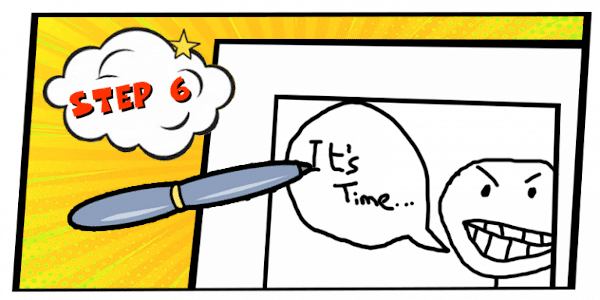
A comic book is like a super long comic strip that requires more than one page. The process of creating a comic book is almost similar to creating a comic strip. However, there are a couple of extra steps you need to take to make a comic book.
If you’re looking for a readily made comic book or blank comic book templates, see this amazing blank comic book template for kids (Amazon Affiliate Link):
Here is a super quick step-by-step tutorial on how to make a comic book out of paper:
- Pile together at least 3 A4 pages. This will give you 12 pages for your comic book. Then fold all of them in half:
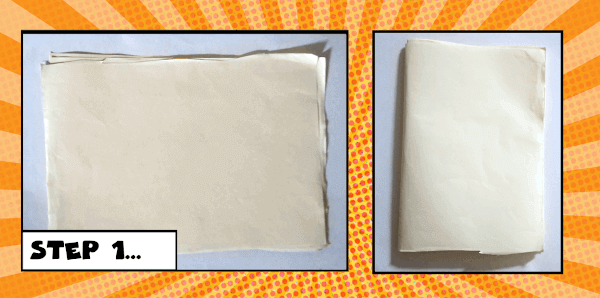
- Staple the folded papers together. This should give an A5 sized booklet. Then fold the area with staples in slightly like in the image below:
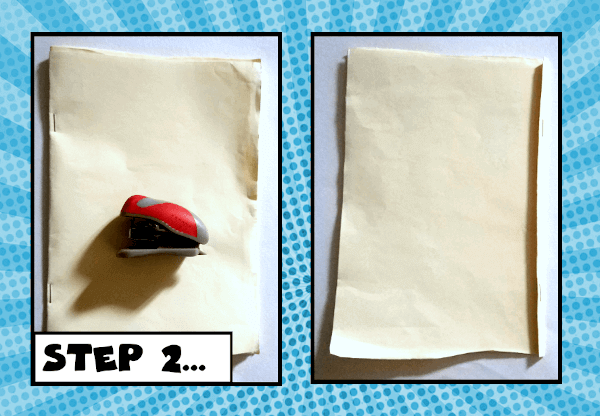
- Fold another A4 paper in half. This paper will be for your comic’s cover. We used an A4 piece of card to give our comic book a sturdy cover:
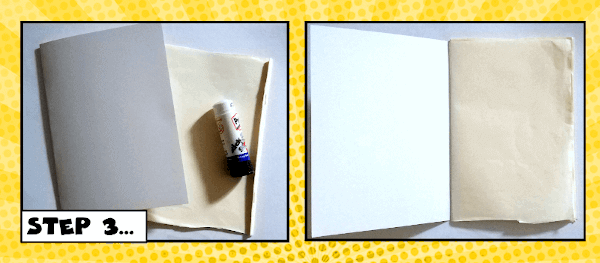
Then apply glue on the tiny folded over part of your booklet – On the side where you can see the staples. Next, stick the cover and booklet together to form your comic book.
- Sketch out your cover using a pencil. And now the fun part: Outline your pencil drawing with a pen and then colour it in like a colouring book:
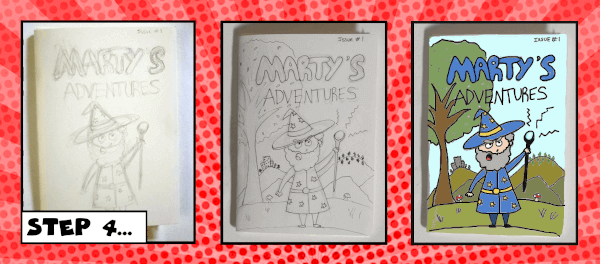
- Plan on your comic on a separate paper. You should ideally plan out each frame. Think about what the characters will say, what the scene might look like and any other small details. For inspiration, take a look at this post on how to come up with good ideas .
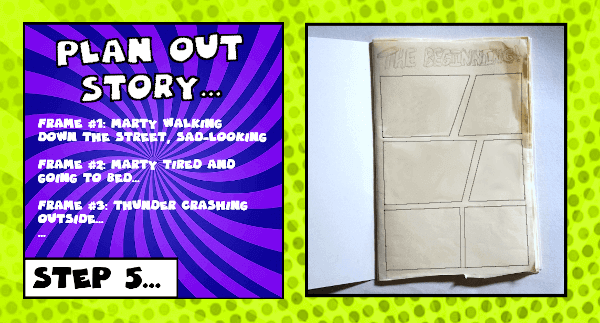
Once the planning is done, sketch out your frames and cover over them in black pen.
- Draw in your frames using a pencil. Remember to include speech bubbles, special effects and facial expressions on your characters. Once happy outline the drawing with a black pen and colour it in using your favourite colours:
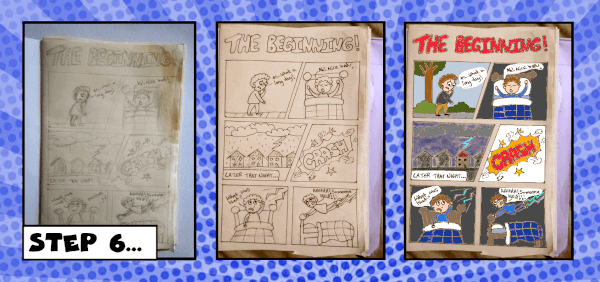
Carry on doing the same with the other pages in your comic book until complete.
Hooray! Your comic book is now complete. Now that you have done your first comic – Don’t stop now! Create your own comic book collection and amaze your friends with your bedazzling story-telling skills! You could even be the next Stan Lee!
Making a comic book is a great school project which can be applied to any lesson, whether it’s art, science or English. Comic books are a great way to encourage creativity in kids and build on their story-telling skills. You can even ask students to create comic books to test their understanding of a complex subject or topic.
One of the hardest parts of creating a comic strip is drawing out the characters. As a beginner to the world of creating comic books, try not to worry too much about your drawing skills. For now, even a simple stick figure will do – In fact, there are many famous comics on the internet drawn entirely using stick figures!
If you want more than just stick figures, you can try out the simple steps below on how to draw your own comic strip characters. For this method, you’ll start off using a light pencil to sketch your character and then you’ll add in the colour:
- Start with a simple circle.
- Draw two circles for the eye and a mouth. And don’t forget a tiny curved dot for the nose!
- Sketch any rough hairstyle. Add in the eyebrows over the hair.
- Draw a triangular-looking rectangle for the body.
- Roughing sketch in the legs and tiny shoes.
- Add in your character’s arms.
- Draw in the smaller details. Don’t forget to add the tiny hands.
- Go over your sketch with a black pen.
- Colour in your character
- Your comic strip character is complete!
Here is a little cheat sheet of all the steps involved in drawing your own comic strip character:
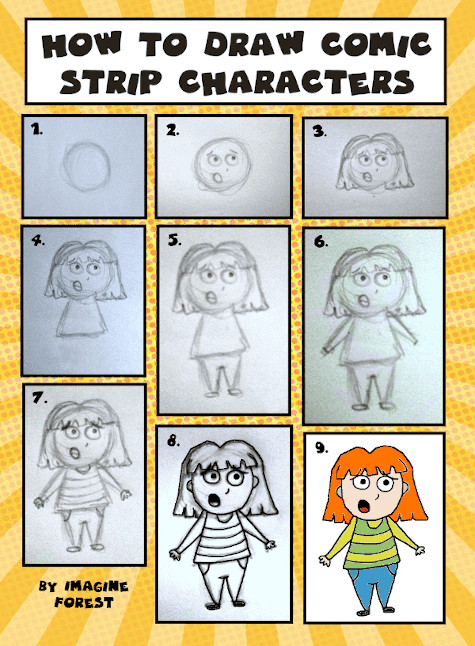
By following these simple instructions, you’ll be drawing cool comic strip characters in no time! If you need more help drawing characters for your comic strips, then we recommend this book on how to draw cartoon character for kids (Amazon Affiliate Link):

Now you know how to create your own comic strip the next step is to start creating more! Here are some fun comic strip ideas to try out:
- School Day: Create a comic about your best/worst day at school.
- Travel Comic: Create a travel comic about a recent trip or holiday you went on.
- Friendship: Write a comic about your best friend or a friend and give it to them as a gift .
- Fairy Tales: Recreate your favourite fairytale as a comic strip.
- Superhero: Design your own superhero and write a comic strip about their adventures. You can check out these superhero writing prompts for inspiration.
- Family: Write a comic strip about a family member and give it to them as a present.
- Music: Write a comic strip based on your favourite song, singer or band.
- The Future: Create a comic strip based on how you will be like in 10 years time.
- Anti-bullying: Write a comic about bullying to help anyone who is being bullied .
- Endangered Species: Raise awareness of an endangered species through creating a comic strip.
These comic strip ideas are great for school and at home. Why not challenge yourself and create a comic strip for all 10 of the comic strip ideas above! For more inspiration take a look at our post on coming up with story ideas .
We all need a little inspiration now and then. To inspire your comic strip creation, here are some simple and fun comic stripe examples:
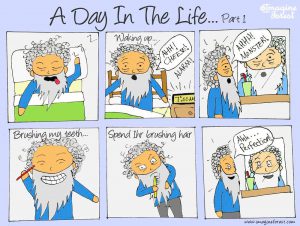
Why not continue the comic strips in these examples or create your own using these characters?
Creating comic strips is so much fun. And it’s easy too! Just make sure to sketch out your ideas before creating your comic strip and make sure you keep your characters simple (as you may have to draw them many times in different positions.) Now sharpen your pencil and get creating!
What do you think of our step-by-step instructions on how to create a comic strip? Let us know your thoughts in the comments. In the meantime, why not take a look at our monster flip book activity or learn how to write your first-ever Haiku ?
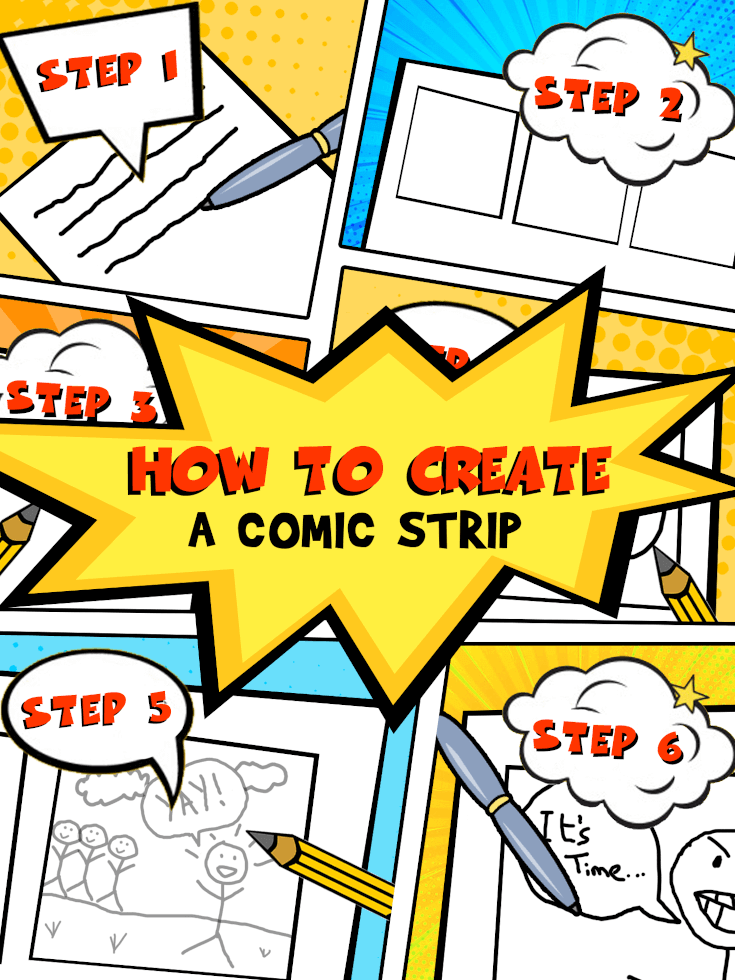
Marty the wizard is the master of Imagine Forest. When he's not reading a ton of books or writing some of his own tales, he loves to be surrounded by the magical creatures that live in Imagine Forest. While living in his tree house he has devoted his time to helping children around the world with their writing skills and creativity.
Related Posts

Comments loading...
- International
- Education Jobs
- Schools directory
- Resources Education Jobs Schools directory News Search

Canva - Create a Comic Strip - Assignment for Students
Subject: Computing
Age range: 11-14
Resource type: Lesson (complete)
Last updated
11 February 2023
- Share through email
- Share through twitter
- Share through linkedin
- Share through facebook
- Share through pinterest

Introduce your students to the world of digital storytelling with this engaging and educational assignment. With the rise of visual storytelling, comic strips have become an increasingly popular form of communication, and this project will give your students the opportunity to create their own comic strip using Canva.
In this assignment, students will:
- Create a Canva account if required
- Choose a comic strip template
- Customize the template with their own images, characters, and text
- Add dialogue to bring their story to life
- Rearrange panels to create the desired layout
- Proofread their comic strip to ensure accuracy and clarity
- Download or share their final product
This assignment is designed to be easy to follow, with student instructions and a grading rubric to help you evaluate your students’ work. Whether you’re a seasoned Canva user or new to the platform, you’ll find that this assignment is a fun and accessible way for your students to express their creativity and practice their digital skills.
- Student Assignment in pdf (planner, instructions, shortcut keys, examples)
- Grading rubric provide in word and pdf
- Planner provided in word and pdf
So why wait? Give your students the gift of storytelling and get them started on their own comic strip today!
Just deliver the pdf with instructions, shortcuts keys and examples to them either electronically or by print. You will need an internet connect so that students can use the Free or Education account in Canva to complete this lesson.
If you have any questions about this resource please contact me at [email protected] .
Tes paid licence How can I reuse this?
Your rating is required to reflect your happiness.
It's good to leave some feedback.
Something went wrong, please try again later.
This resource hasn't been reviewed yet
To ensure quality for our reviews, only customers who have purchased this resource can review it
Report this resource to let us know if it violates our terms and conditions. Our customer service team will review your report and will be in touch.
Not quite what you were looking for? Search by keyword to find the right resource:
- Find a Store
- Classroom Decorations
Comic Book Project

Language Arts, Writing, Writing Process, Traits of Writing, Art, Mediums, Techniques
Students will write a fictional story creating a conflict and resolution, applying sequential writing, using action verbs, descriptive language, and onomatopoeia, in a comic book format with original artwork and/or technology.
- Students choose the dimensions of the size of their pictures. Each page must have at least four to six panels with related captions.
- Explain that each panel size for the comic book picture must be the same for each page.
- Require that onomatopoetic words such as bang, boom, crash, clang, buzz, whoosh, swish, creak, eek, etc., be used occasionally.
- Read the student check-off list aloud to clarify all requirements. Writing the comic strips for each page must precede the artwork and graphics. Excessive violence, weapons, and blood are unacceptable. This project is rated for a general audience.
- Brief student conferences on each student's rough draft should be held to facilitate complete sentence structure, descriptive adjectives, and action verb usage. Peer editing during this project combines reading enjoyment and student affirmation with skill development.
- The final due date provides the students with a day to read each other's creations. This day fills the classroom with recreational reading and a positive climate for further emphasis on writing for entertainment.
- spiral notebook
- colored pencils
- construction paper
Quick Links
- Common Core Standards
- Subscribe To Our Newsletter
- Search 400+ Lessons!
- Daily Brain Tickler
- Weekly Writing Prompt
Monthly Spotlight
- Free Activities
- Monthly Calendars
- Privacy Policy
- Cookie Options
- Return Policy
© 2024 Teacher Created Resources. All Rights Reserved.
<strong data-cart-timer="" role="text"></strong>
Flickr user Gonzalo Díaz Fornaro, Creative Commons
- Visual Arts
- Drawing & Painting
Creating Comic Strips How can you weave together words and pictures in a comic strip to create a nonfiction story?
In this 3-5 lesson, students will examine comic strips as a form of fiction and nonfiction communication. Students will create original comic strips to convey mathematical concepts.
Get Printable Version Copy to Google Drive
Lesson Content
- Preparation
- Instruction
Learning Objectives
Students will:
- Analyze the evolution of comic strips using the familiar Peanuts comic strips and other comic strips.
- Explore comic strips from the perspective of a story (setting, characters, plot).
- Evaluate comic strips by looking at words, pictures, and how they work together.
- Create an original comic strip to convey mathematical information.
- Share original comic strips with younger students as a reference tool.
Standards Alignment
National Core Arts Standards National Core Arts Standards
VA:Cr1.2.3a Apply knowledge of available resources, tools, and technologies to investigate personal ideas through the art-making process.
VA:Cr1.2.4a Collaboratively set goals and create artwork that is meaningful and has purpose to the makers.
VA:Cr1.2.5a Identify and demonstrate diverse methods of artistic investigation to choose an approach for beginning a work of art.
Common Core State Standards Common Core State Standards
ELA-LITERACY.W.3.2 Write informative/explanatory texts to examine a topic and convey ideas and information clearly.
ELA-LITERACY.W.4.2 Write informative/explanatory texts to examine a topic and convey ideas and information clearly.
ELA-LITERACY.W.5.2 Write informative/explanatory texts to examine a topic and convey ideas and information clearly.
MATH.CONTENT.3.MD.A.2 Measure and estimate liquid volumes and masses of objects using standard units of grams (g), kilograms (kg), and liters (l).1 Add, subtract, multiply, or divide to solve one-step word problems involving masses or volumes that are given in the same units, e.g., by using drawings (such as a beaker with a measurement scale) to represent the problem.
MATH.CONTENT.4.MD.A.1 Know relative sizes of measurement units within one system of units including km, m, cm; kg, g; lb, oz.; l, ml; hr, min, sec. Within a single system of measurement, express measurements in a larger unit in terms of a smaller unit. Record measurement equivalents in a two-column table.
MATH.CONTENT.5.MD.A.1 Convert among different-sized standard measurement units within a given measurement system (e.g., convert 5 cm to 0.05 m), and use these conversions in solving multi-step, real world problems.
Recommended Student Materials
Editable Documents : Before sharing these resources with students, you must first save them to your Google account by opening them, and selecting “Make a copy” from the File menu. Check out Sharing Tips or Instructional Benefits when implementing Google Docs and Google Slides with students.
- Comic Strip Template
- Snoopy in Space
- Peanuts Motion Comics: Independence Day
- Early Peanuts Comics Strips
- Make Beliefs Comix
- Digital Storyboard Maker
Additional Materials
- Pencils, fine-tip markers or pens
Teacher Background
Teachers should review the lesson and standards. Math standards are suggested but not limited to the ones listed. Visit CCSS Math Standards for more information. Review the book, Comic Strips: Create Your Own Comic Strips from Start to Finish by Art Roche. Select a video from the Peanuts Collection or Snoopy Collection (example: Peanuts Independence Day ). Exploring the following resources is also helpful prior to teaching the lesson: Early Peanuts Comics Strips (1950-1968), age-appropriate comic strips , an example Math Comic Strip , the history of comic strips, and parts of a story.
Student Prerequisites
Students should be familiar with grade-level math and parts of a story (setting, characters, plot).
Accessibility Notes
Adapt math materials as needed and allow extra time for task completion.
- Show a Peanuts comic strip video, such as Snoopy in Space or Peanuts Motion Comics: Independence Da y .
- Prompt a class discussion with the following questions: Is this fiction or nonfiction? (It is creative nonfiction, using fictional characters to share factual information.) Who is familiar with the Peanuts characters? What other Peanuts shows have you seen? What story elements do you recognize? What is the goal of the production? What art technique is used to produce this video?
Build
- Explore the evolution of Early Peanuts Comics (1950-1968). Ask students: What similarities and differences do you notice about the comic strips? How many frames are used in each strip? What role does color play in creating these comic strips? Who created these comic strips? (Introduce the creator, Charles Schultz, to the class.)
- Discuss the history of comic strips. Share that comic strips have been used as a communications tool for over 100 years and the first successful daily comic strip was Mutt and Jeff , which started in 1907. Comic strips are used to tell a story. They have three main parts of a story: s etting, characters, and plot . Comic strips use words and pictures equally. Comic strips use a series of frames to show story movement.
- Explore age-appropriate comic strips . Have students work either independently, in groups, or as a class to explore other comic strips. Examine each comic strip for parts of a story, the use of words and pictures, and the number of frames used.
- Discuss the use of comic strips to convey factual information. Ask students: What factual information was shared in the comic strips or video we watched? What other factual information can be shared using a comic strip? Why would a comic strip creator want to share nonfiction information in this format?
- Create original comic strips using the Comic Strip Template or digital comic strips with sites like Make Beliefs Comix , Pixton , or Digital Storyboard Maker . Have each student create a 4-frame comic strip to convey a math concept. Model a math concept, then assign a math concept (learned or reinforced in the student’s previous grade) to each student. Using the three parts of a story, have each student create a comic strip to share the math concept. Have the student first work in pencil (drawing lightly). Review each comic strip draft for accuracy. Once approved, ask the student to “ink” the strip using a permanent fine tip marker. Erase any remaining pencil marks. Each student should title (top line) and sign (bottom line) the strip.
- Create a “Math by Comic Strip” book. Compile all comic strips into a single book. (You may want to create two books: one to share and one to keep as a classroom.)
Reflect
- Share the “Math by Comic Strip” book with students in the previous grade. Have each student present their comic strip to another student or the class.
- Assess students’ knowledge with one of the following writing or discussion prompts: What were students able to learn about math from reading your comic strip? How did your words and pictures work together to create a math story? What story elements were present in your comic strip? Who would the audience for your book be?
- Compare and contrast a classic novel and a classic graphic, such as Tales from the Brothers Grimm and Treasure Island , or a nonfiction graphic novels, such as Greek and Roman Mythology .
Original Writer
Carol Parenzan
JoDee Scissors
October 29, 2021
Related Resources
Article thought-provoking art.
There’s no need to divide critical thinking from creativity. The two easily meld into classroom activities with art as the starting point.
- Arts Integration

Lesson Cartooning Political and Social Issues
In this 6-8 lesson, students will examine political cartoons and discuss freedom of speech. They will gather and organize information about a current or past issue that makes a political or social statement and analyze the different sides. Students will plan, design, and illustrate a political cartoon that presents a position on a political or social issue.
- Social Studies & Civics
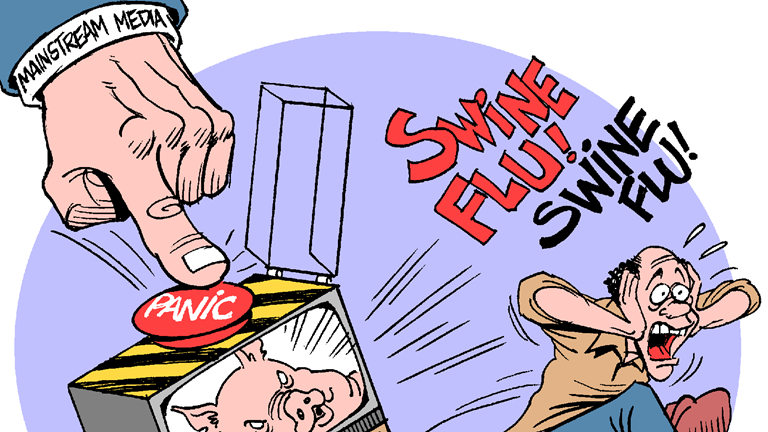
Lesson Drawing Political Cartoons
In this 9-12 lesson, students will analyze cartoon drawings to create an original political cartoon based on current events. Students will apply both factual knowledge and interpretive skills to determine the values, conflicts, and important issues reflected in political cartoons.
- English & Literature
- Grades 9-12
- Comics & Animation
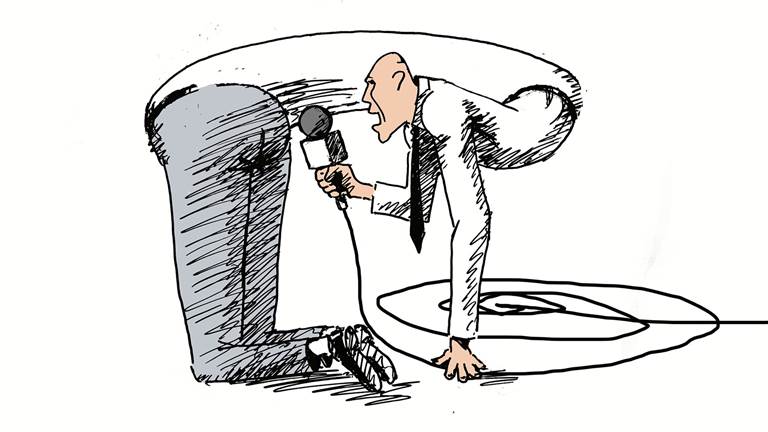
Lesson Media Awareness I: The Basics of Advertising
In this 6-8 lesson, students will examine the influence of advertising from past and present-day products. Students apply design principles to illustrate a product with background and foreground. This is the first lesson designed to accompany the media awareness unit.
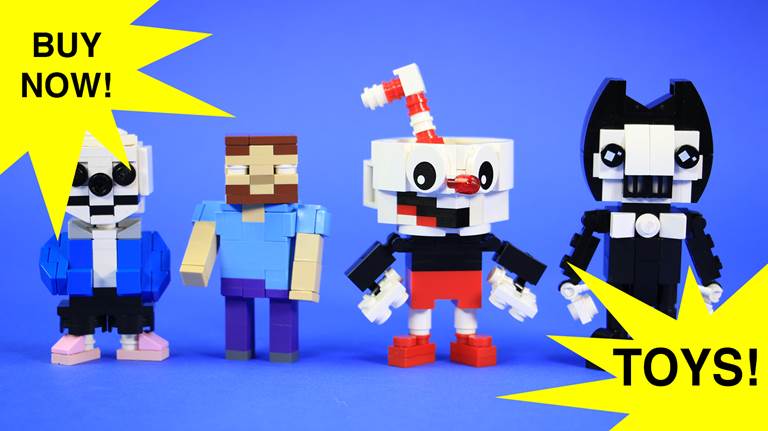
Article Developing an Artistic Eye for the Math Classroom
Middle school math teachers will unlock students’ “artistic mathematical eye” with arts objectives, lesson openings, essential questions, and student choice.
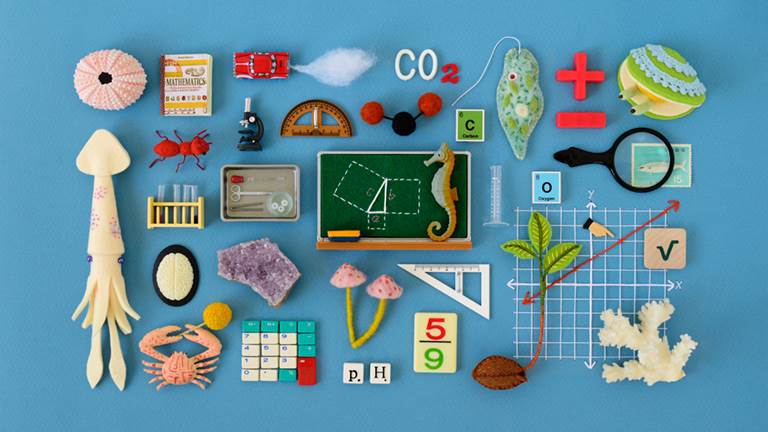
Lesson Composing and Clapping Rhythms
In this 3-5 lesson, students will clap rhythm sequences and compose an eight-measure composition. Students will explore rhythm concepts, including the names and symbols associated with music notation. They will also compare rhythmic sequences to math concepts.

Lesson Counting Crows: Puppet Problem Solving
In this 3-5 lesson, students will infer the moral of a story and compare two mediums of Aesop’s fable, “The Crow and the Pitcher.” Each student will design their own puppet to act out the fable using pebbles and water in containers. Students will make predictions about Crow’s strategy then make comparisons with their findings.
- Myths, Legends, & Folktales
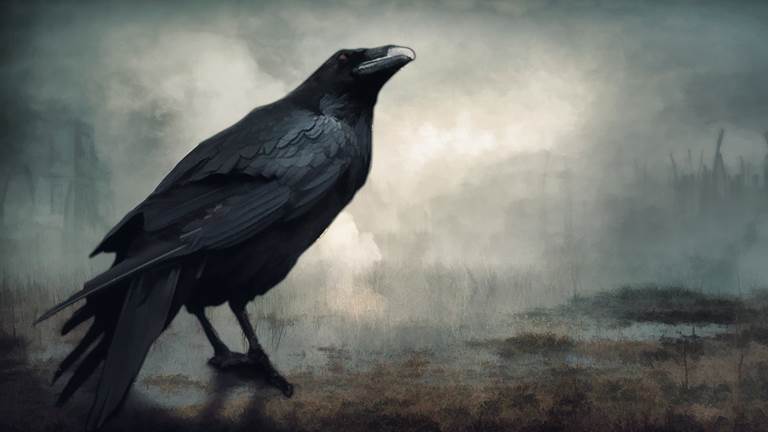
Lesson Creating AB Patterns
In this K-2 lesson, students will construct patterns using visual arts designs and math manipulatives. They will identify patterns existing in the natural and man-made world, art, math, and science.
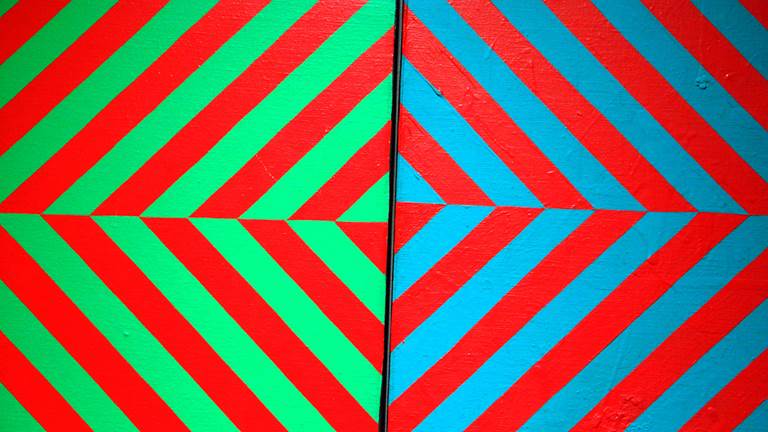
Kennedy Center Education Digital Learning
Eric Friedman Director, Digital Learning
Kenny Neal Manager, Digital Education Resources
Tiffany A. Bryant Manager, Operations and Audience Engagement
Joanna McKee Program Coordinator, Digital Learning
JoDee Scissors Content Specialist, Digital Learning
Connect with us!
Generous support for educational programs at the Kennedy Center is provided by the U.S. Department of Education. The content of these programs may have been developed under a grant from the U.S. Department of Education but does not necessarily represent the policy of the U.S. Department of Education. You should not assume endorsement by the federal government.
Gifts and grants to educational programs at the Kennedy Center are provided by A. James & Alice B. Clark Foundation; Annenberg Foundation; the Andrew W. Mellon Foundation; Bank of America; Bender Foundation, Inc.; Capital One; Carter and Melissa Cafritz Trust; Carnegie Corporation of New York; DC Commission on the Arts and Humanities; Estée Lauder; Exelon; Flocabulary; Harman Family Foundation; The Hearst Foundations; the Herb Alpert Foundation; the Howard and Geraldine Polinger Family Foundation; William R. Kenan, Jr. Charitable Trust; the Kimsey Endowment; The King-White Family Foundation and Dr. J. Douglas White; Laird Norton Family Foundation; Little Kids Rock; Lois and Richard England Family Foundation; Dr. Gary Mather and Ms. Christina Co Mather; Dr. Gerald and Paula McNichols Foundation; The Morningstar Foundation;
The Morris and Gwendolyn Cafritz Foundation; Music Theatre International; Myra and Leura Younker Endowment Fund; the National Endowment for the Arts; Newman’s Own Foundation; Nordstrom; Park Foundation, Inc.; Paul M. Angell Family Foundation; The Irene Pollin Audience Development and Community Engagement Initiatives; Prince Charitable Trusts; Soundtrap; The Harold and Mimi Steinberg Charitable Trust; Rosemary Kennedy Education Fund; The Embassy of the United Arab Emirates; UnitedHealth Group; The Victory Foundation; The Volgenau Foundation; Volkswagen Group of America; Dennis & Phyllis Washington; and Wells Fargo. Additional support is provided by the National Committee for the Performing Arts.
Social perspectives and language used to describe diverse cultures, identities, experiences, and historical context or significance may have changed since this resource was produced. Kennedy Center Education is committed to reviewing and updating our content to address these changes. If you have specific feedback, recommendations, or concerns, please contact us at [email protected] .
By using this site, you agree to our Privacy Policy and Terms & Conditions which describe our use of cookies.
Reserve Tickets
Review cart.
You have 0 items in your cart.
Your cart is empty.
Keep Exploring Proceed to Cart & Checkout
Donate Today
Support the performing arts with your donation.
To join or renew as a Member, please visit our Membership page .
To make a donation in memory of someone, please visit our Memorial Donation page .
- Custom Other


Odyssey Comic Strip Creative Assignment
The Odyssey by Homer comic strip assignment.
Save more than 20% when you purchase this as a BUNDLE:
The Odyssey Activity Bundle
This is one of my favorite projects for Homer’s “The Odyssey.” Students use 11×17 in. legal paper to create a comic strip that retells the story of Odysseus and his encounter with the Cyclops.
This assignment is aligned with the common core curriculum, and requires students to cite dialogue in MLA format as well as include original narration.
Students will analyze and discover the basis of the conflict of the poem with this assignment.
Other Resources for The Odyssey That Might Interest You:
The Odyssey Board Game Project
The Odyssey Group Research Project
The Odyssey Character Analysis Essay
The Odyssey Differentiated Writing Responses
The Odyssey Vocabulary Packet
The Odyssey Character Analysis Graphic Organizers

SUBSCRIBE NOW

VIDEO
COMMENTS
In hopes of helping "make EdTech easier" I created 15 ready-to-use comic strip templates for your next lesson.
Download Printable PDF Free Comic Strips Templates for students. Easy to use 3 or 4 panel. students creatively engage in comic book making.
Comic Strip LESSON PLAN. THREE: Using one of the comic strip templates provided, elicit ideas for a story and put the results on the board. Use fewer words than in the sample board plan below - keep to the main points and use verbal communication as much as possible. Board Plan.
Using comic strips in the classroom is a surefire way to engage student creativity in a fun, expressive and educational activity.
This page both archives teaching content from National Association of Comics Art Educators, along with dozens of additional teaching comics resources for all ages developed by The Center for Cartoon Studies community. In recent years the comics medium has flourished, generating much interest from the literary, art, and educational communities. This site will continue to expand with more ...
Educators! Learn how to use Pixton in the classroom. Set up your classroom and begin teaching any subject in minutes through the super-power of comics.
Directions: Your comic strip presentation will be graded according to the following rubric. Use the rubric as a guide when creating your comic strip and as a means to self-assess your comic strip before you turn it in.
The blank comic book templates include 10 pages, providing a perfect comic strip template for students to fill with their drawings and dialogue as they practice creating the elements of a story frame by frame. The printable PDF template includes: Mix and match the comic book elements to suit your year level and the activity! Younger students ...
Use these comic strip page templates for creative assignments for your students. They can be used to assign comic/cartoon strips about the unit you are studying, a biography of an author or historical figure, or a creative book report. This download includes 30 total templates.
Enhance your Kids' creativity with these versatile comic strip page templates, ideal for engaging and imaginative assignments. These templates are perfect for assigning comic/cartoon strips based on the unit you're studying, creating biographies of authors or historical figures, or presenting captivating book reports.
Comic Strip Template Pages for Creative AssignmentsUse these comic strip page templates for creative assignments for your students. They can be used to assign comic /cartoon strips about the unit you are studying, a biography of an author or historical figure, or a creative book report.
Create a Comic Strip. When you think of writing skills, you probably remember long essays, research reports, tests, or other stressful school assignments. But communicating using the written word doesn't have to be tough! It can be as simple as telling a story, as rudimentary as writing a wish list, or as fun as composing a comic strip.
Learn how to create a comic strip and a comic book following these instructions. Everything from ideas to how to draw comic characters.
Students examine graphic novels and comic books and discuss the important components of the genre, such as captions, dialogue, and images. They then use an online tool to create a six-panel comic highlighting six key scenes in a book they have read. By creating comic strips or cartoon squares featuring characters in books, students are encouraged to think analytically about the characters ...
Introduce your students to the world of digital storytelling with this engaging and educational assignment. With the rise of visual storytelling, comic strips have become an increasingly popular form of communication, and this project will give your students the opportunity to create their own comic strip using Canva.
Comic Strip Rubric
Cite examples of comics that fill those requirements. Discuss how comic strips can turn into comic books. Explain to the students their assignment will be to create a comic book using imaginary characters that find a solution to a problem. Use this project to encourage the theme of the enjoyment of recreational reading.
Creating Comic Strips. How can you weave together words and pictures in a comic strip to create a nonfiction story? In this 3-5 lesson, students will examine comic strips as a form of fiction and nonfiction communication. Students will create original comic strips to convey mathematical concepts. Get Printable Version Copy to Google Drive.
The culprit: the free and extremely addictive application Bitstrips, which allows you to quickly create comic strips without needing to know how to draw. With a few clicks of the mouse button, you ...
This resource is aligned with MS-PS1-4 and takes 3-4 days to complete. What's Included: Materials Needed: 11 x 17 white paper for the paper comic strip, colored pencils, markers, and pens. How I Like to Use this Product: I love using this as an assessment for states of matter!
Assignment Overview: For this assignment, you will be examining the universal theme of betrayal in Roman history. After researching Roman history, you will create a six-panel comic strip depicting a plausible betrayal scene from Roman times. Finally, you will present an analysis of your scenario in consideration of the theme of betrayal and Roman history.
Students use 11×17 in. legal paper to create a comic strip that retells the story of Odysseus and his encounter with the Cyclops. This assignment is aligned with the common core curriculum, and requires students to cite dialogue in MLA format as well as include original narration. Students will analyze and discover the basis of the conflict of ...
Enjoy this FREE comic strip assignment in your classroom! These pages add a unique and fun way to have students create or summarize stories!This is a ready-to-print- booklet offering a full assignment that students can complete independently. You can use it with any short story, novel, non-fiction r...